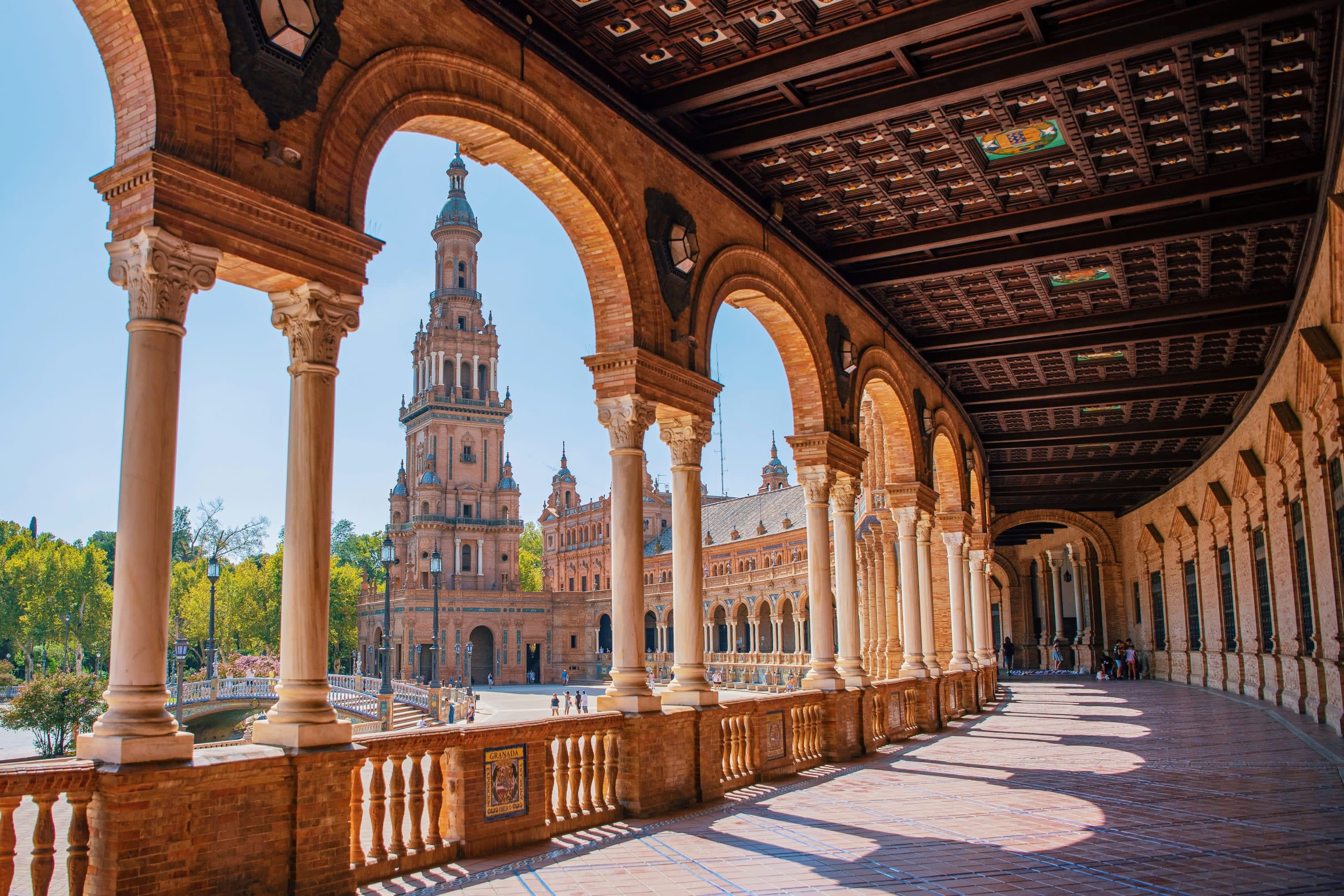
Spain is a tapestry of vibrant cultures and gorgeous landscapes, where each destination tells its own story. From the bohemian charm of Barcelona to the sun-drenched allure of Ibiza, there's always a new corner waiting to be explored. Below we cover the best places to go in Spain, broken down by region, and all sourced from Fora travel advisors who’ve either vacationed or lived in the country.
Catalonia
Catalonia is an autonomous region in northeastern Spain with a distinct heritage and language (Catalonian). Barcelona — one of the best places to visit in Spain for first-timers — is the hip jewel (and capital) of Catalonia. Its energy contrasts with quieter historic towns and cities like Girona — all of which are set against a backdrop of the Mediterranean coast and the rugged peaks of the Pyrenees.
Barcelona
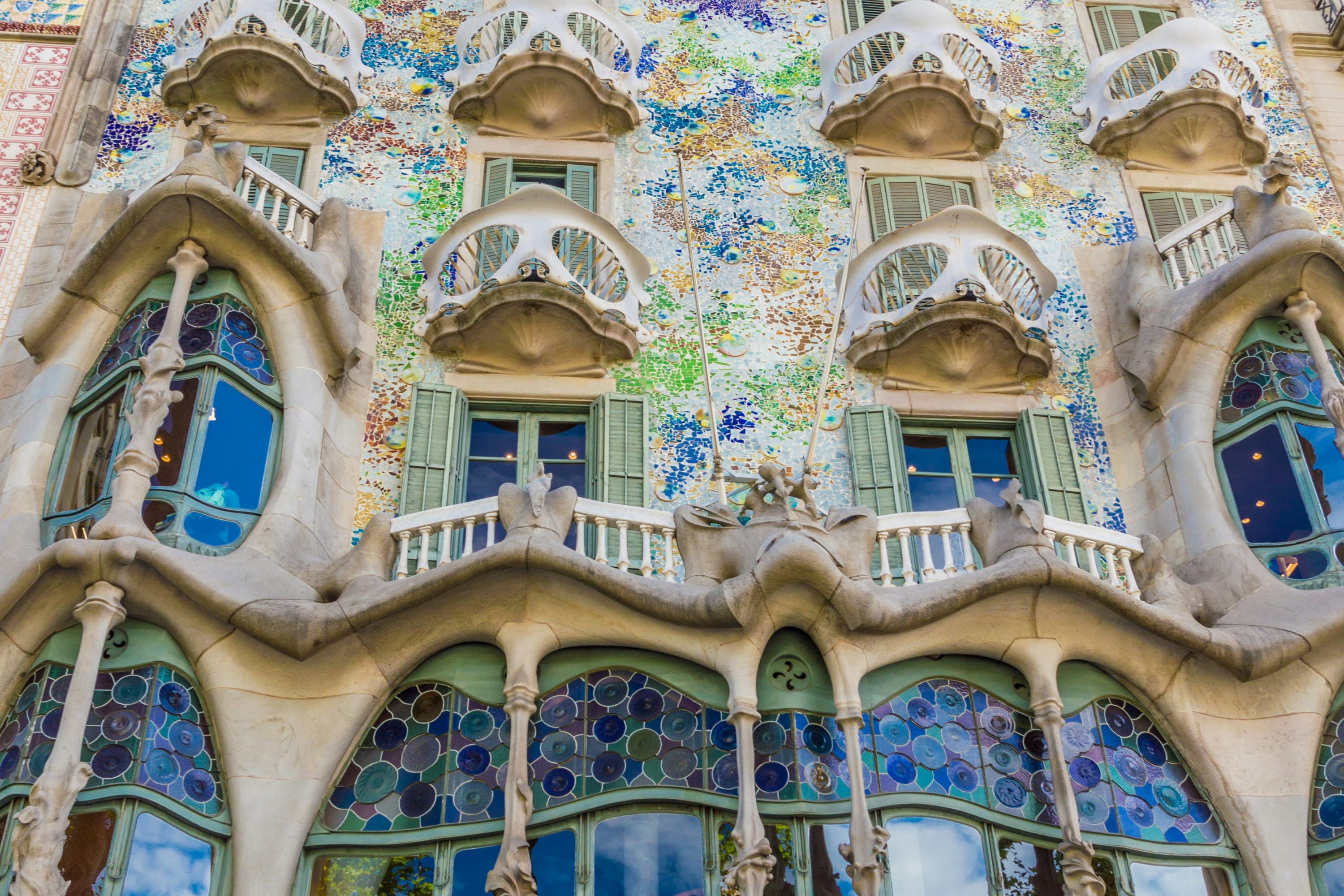
Barcelona is a fusion of tradition and cultural innovation; it’s one of the best places to visit in Europe, let alone Spain. Historic streets buzzing with creative energy seamlessly give way to modern architecture. You’ll love the dynamic arts scene, bustling markets and iconic landmarks like Antoni Gaudí’s architectural masterpieces. Lively beaches and nearby hiking trails with scenic mountain views offer a breath of fresh air.
“Barcelona is a city that surprises you at every turn,” Fora Advisor Lauren Harvey said. “One moment, you’re beneath the spires of La Sagrada Familia, the next, you’ve found a café serving the best churros of your life.”
The gastronomic scene puts a Catalan spin on Spanish cuisine. Expect a thriving tapas culture and an international lineup of high-end eateries. (Fora Advisors loved Benzina, Virens and Flax & Kale, to name a few.) Nightlife options are just as extensive: chic rooftop terraces, vibey tapas bars and tabernas, bass-heavy nightclubs and, in the summer, parties along La Barceloneta, the city’s main beach.
“Afternoons disappear tracing Gaudí’s dreamlike architecture, and evenings stretch long over jamón, bombas and vermouth,” Lauren said. “History, art and food don’t just coexist here — they blend so effortlessly, you barely notice where one ends and the next begins.”
If you’re visiting Barcelona with kids, there’s no shortage of family-friendly excitement. Museums, greenspaces like the whimsical Park Güell, authentic Spanish candy and chocolate shops and amusement parks like Tibidabo are just a few things to do. Fora Advisor Anny Chen noted that the city is perfect for a long-weekend getaway (or longer) and makes a great jumping-off point for exploring the rest of Spain.
“Barcelona is popular for a reason,” Fora X Advisor Renée Olson said. “This coastal town has it all: the beach, architecture, access to wine regions, an amazing food and cocktail scene… Don't let anyone talk you into skipping it!”
Places to stay in Barcelona, Spain
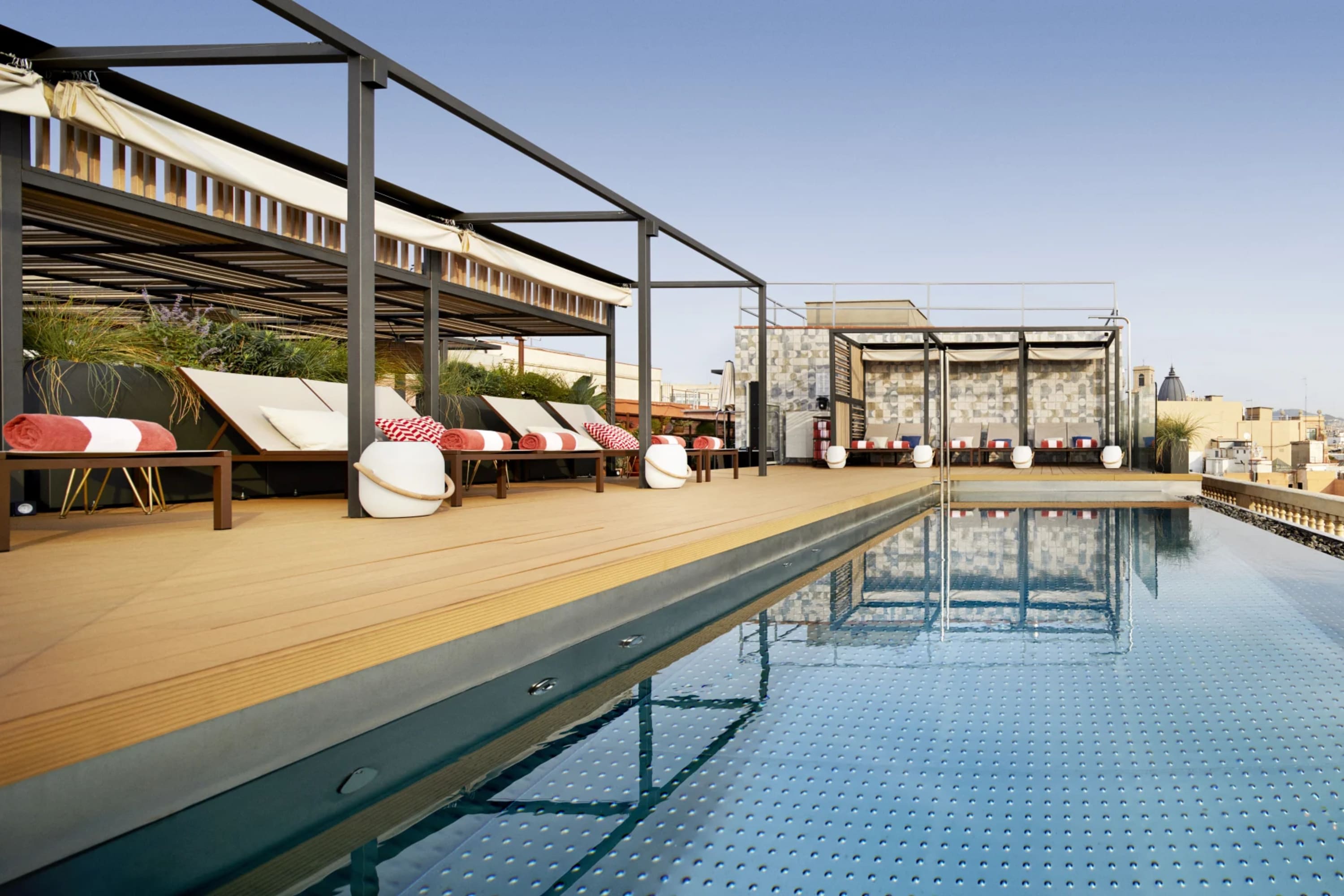
Image courtesy of Kimpton Vividora Barcelona
Wittmore Hotel: This chic adults-only property is one of the top boutique hotels in Barcelona’s Gothic Quarter (Barri Gòtic, in Catalan). It’s an enclave of luxe, contemporary style amid the dramatic and imposing façades of its surroundings.
Fora Reserve perks at Wittmore Hotel include a $100 food and beverage credit, welcome amenities, daily breakfast, an upgrade and extended check-in/out whenever possible.
Kimpton Vividora Barcelona: Kimpton’s boutique-style luxury hotel is where to stay in Barcelona if you prefer familiar service and amenities, like a spa, gym and multiple upscale restaurants serving international dishes. It boasts a bold and colorful modern design and prime location in the Gothic Quarter.
Fora’s IHG Destined partner perks at Kimpton Vividora Barcelona include a $100 hotel credit, daily breakfast daily, an upgrade and extended check-in/out whenever possible.
Girona
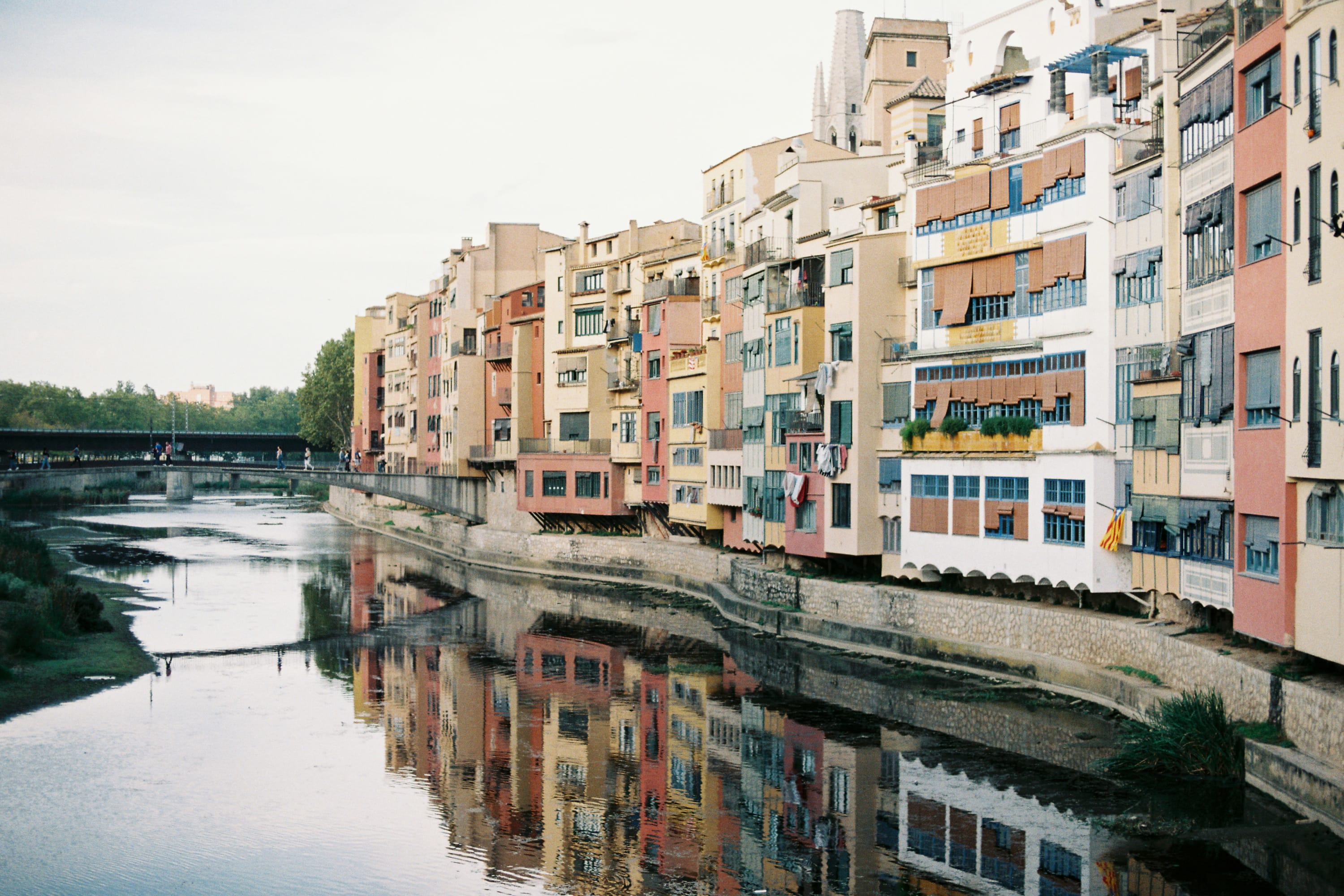
Girona is a historic Catalan city about an hour’s drive north of Barcelona. It dates back to the Classical era. Over the centuries, the city has been ruled by half a dozen different empires — from the Romans to the Moors — contributing to a distinct and varied modern culture, especially evident in its legendary dining scene.
“For a tiny city, it has five Michelin-Star restaurants, and many more on the Michelin Guide list,” Fora Advisor Kat Saval said. “You can spend several days there just eating like royalty.”
Beyond its foodie scene, Girona is best known for the medieval architecture of its Old Quarter (a.k.a. Barri Vell) and excellent museums, like the Girona Art Museum. If you don’t mind a drive, the Salvador Dalí House Museum is about 60 to 90 minutes northeast of Girona, just outside the small village of Port Lligat.
“It’s fun to walk the ancient Roman wall and to visit the well-preserved Jewish quarter, complete with museums, artifacts, tourist shops and restaurants,” Fora Advisor Sara Jeanne Gulley said.
For the best views, walk along the mile-long 9th-century walls and cross the Peixateries Velles bridge to see the city’s historic skyline and countryside through the iron crossbars, Fora Advisor Rod Carrillo-Lundgren said. He also noted that Girona was used to film scenes in Game of Thrones.
Places to stay in Girona, Spain
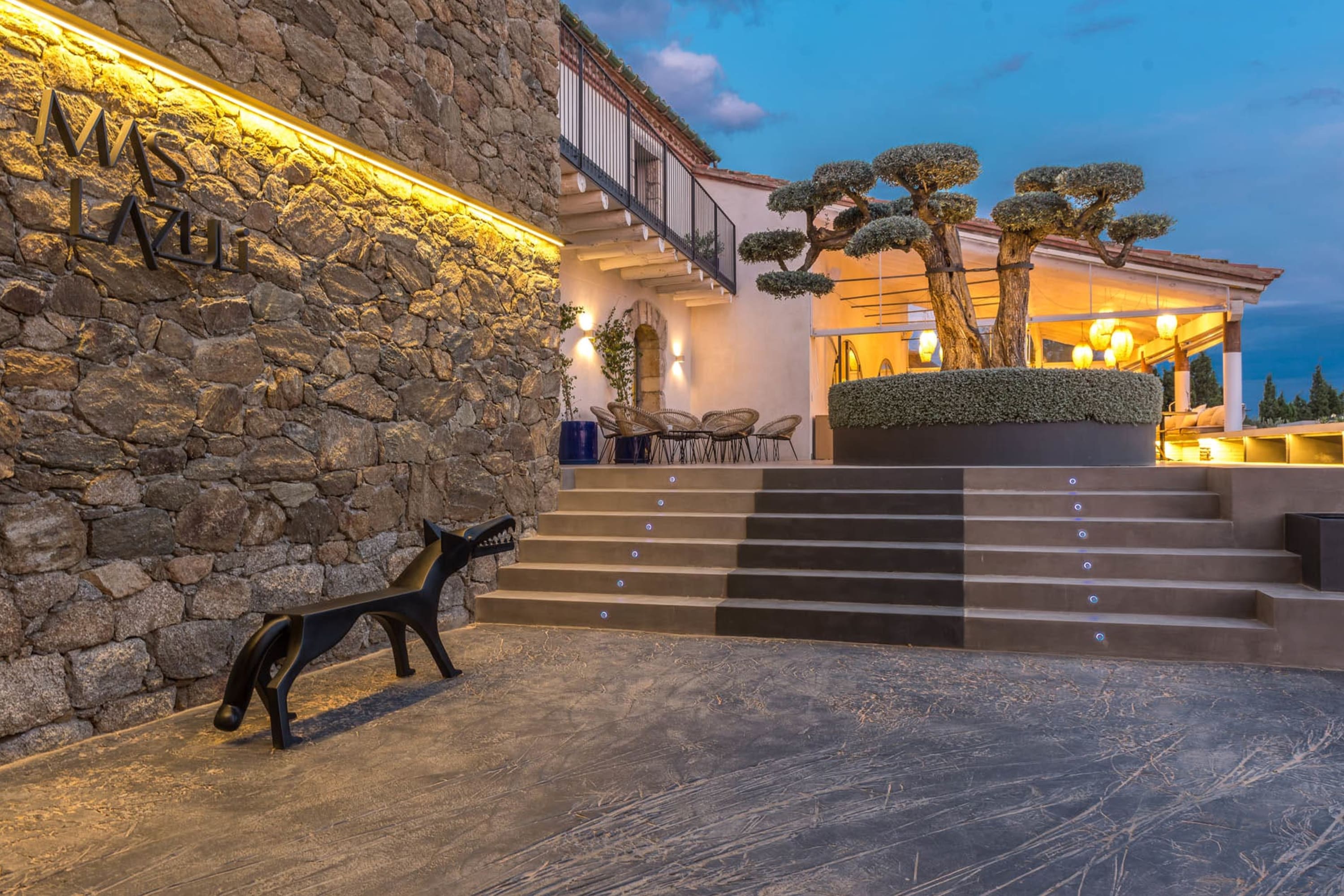
Image courtesy of Mas Lazuli Hotel
Mas Lazuli Hotel: This Michelin-Key boutique hotel is in a restored 12th-century monastery amidst vineyards and olive groves. Elegant rooms, a fine restaurant and the best views of the Girona countryside await.
Day trip from Barcelona or Girona: Costa Brava
Costa Brava is a rugged, picturesque coastline where dramatic cliffs, secluded coves and Mediterranean beaches converge. The area is peppered with charming seaside villages and ancient ruins. It’s two hours northeast of Barcelona — passing through Girona — or 45 minutes from the latter.
Central Spain
Central Spain is dominated by Madrid, Spain’s capital. The region surrounding Madrid is a blend of historic towns and cities like Toledo and Segovia, rolling countryside and scenic mountain ranges. The Sierra de Guadarrama range, for example, is a natural retreat with hiking trails and picturesque vistas. The region is well connected to the rest of Spain — all roads and railways lead to Madrid — so you can easily visit other parts of the country from the capital.
Madrid
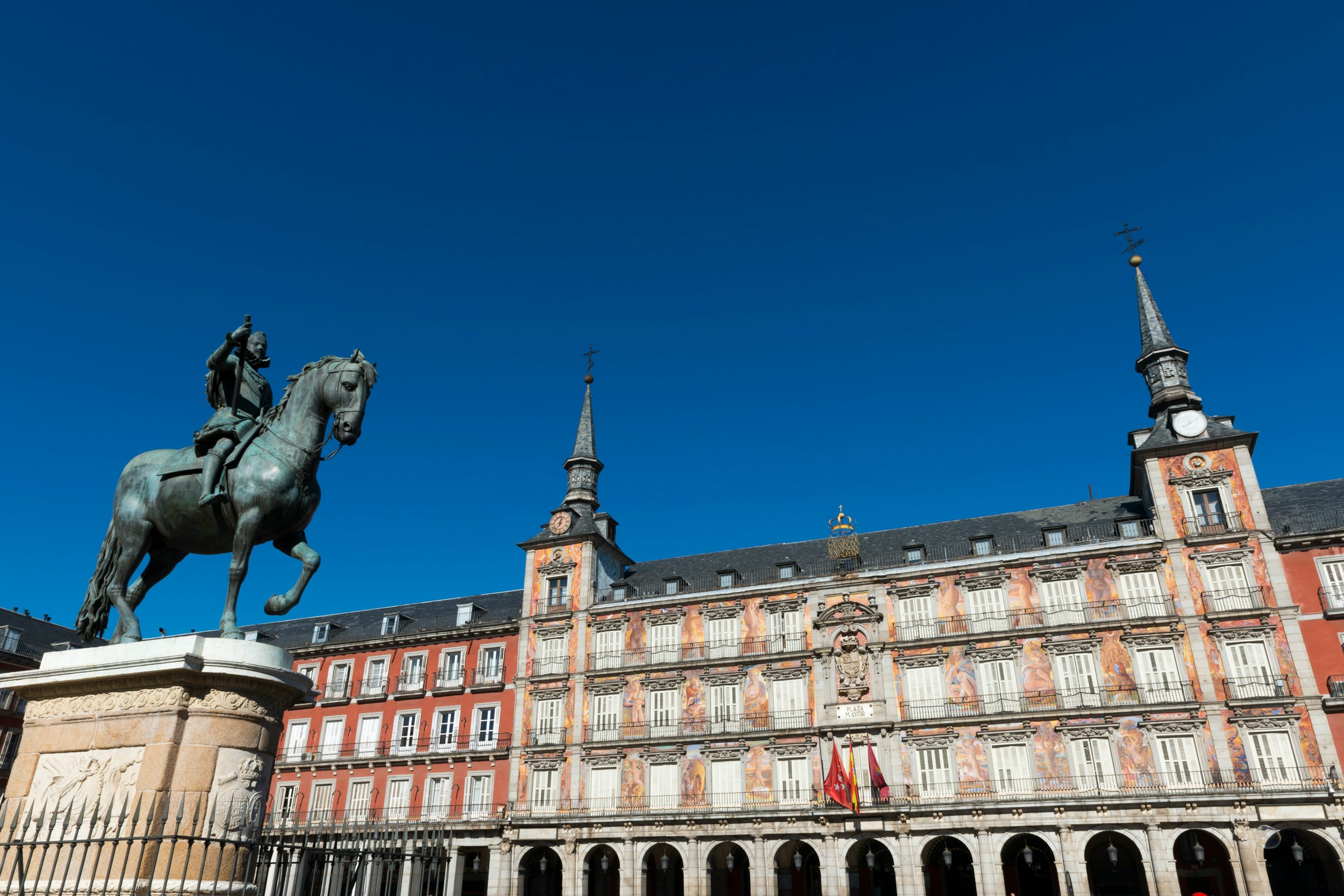
Madrid balances centuries of rich history with a pulse of modern energy. Broad avenues, elegant plazas and grandiose palaces sit side by side with avant-garde museums, thriving nightlife scenes and upscale shopping districts.
“The secret’s out! Spain’s sophisticated capital city is ablaze with energy,” Fora X Advisor Marisa Schwab said.
Madrid is one of the most culturally rich places to go in Spain. The Prado, Reina Sofia and Thyssen-Bornemisza are among Europe’s most prestigious museums. Each is a treasure trove that reflects Spain’s past.
“Madrid equals elegance, with its grand museums and hidden galleries showcasing the city's rich artistic heritage,” Fora Advisor Wieteke Maris said.
Neighborhoods such as La Latina and Chueca brim with creative energy, with quirky cafés, lively tapas bars and indie boutiques. Fora Advisor Tanima Mannan added that Madrid is a “hot destination” for nightlife and a cosmopolitan dining scene.
Day trip idea from Madrid: Segovia
If you’re looking for an escape into history, consider a day trip from Madrid to Segovia. Just an hour away by train, Segovia enchants with its iconic Roman aqueduct and its fairytale-like Alcázar castle.
Places to stay in Madrid, Spain
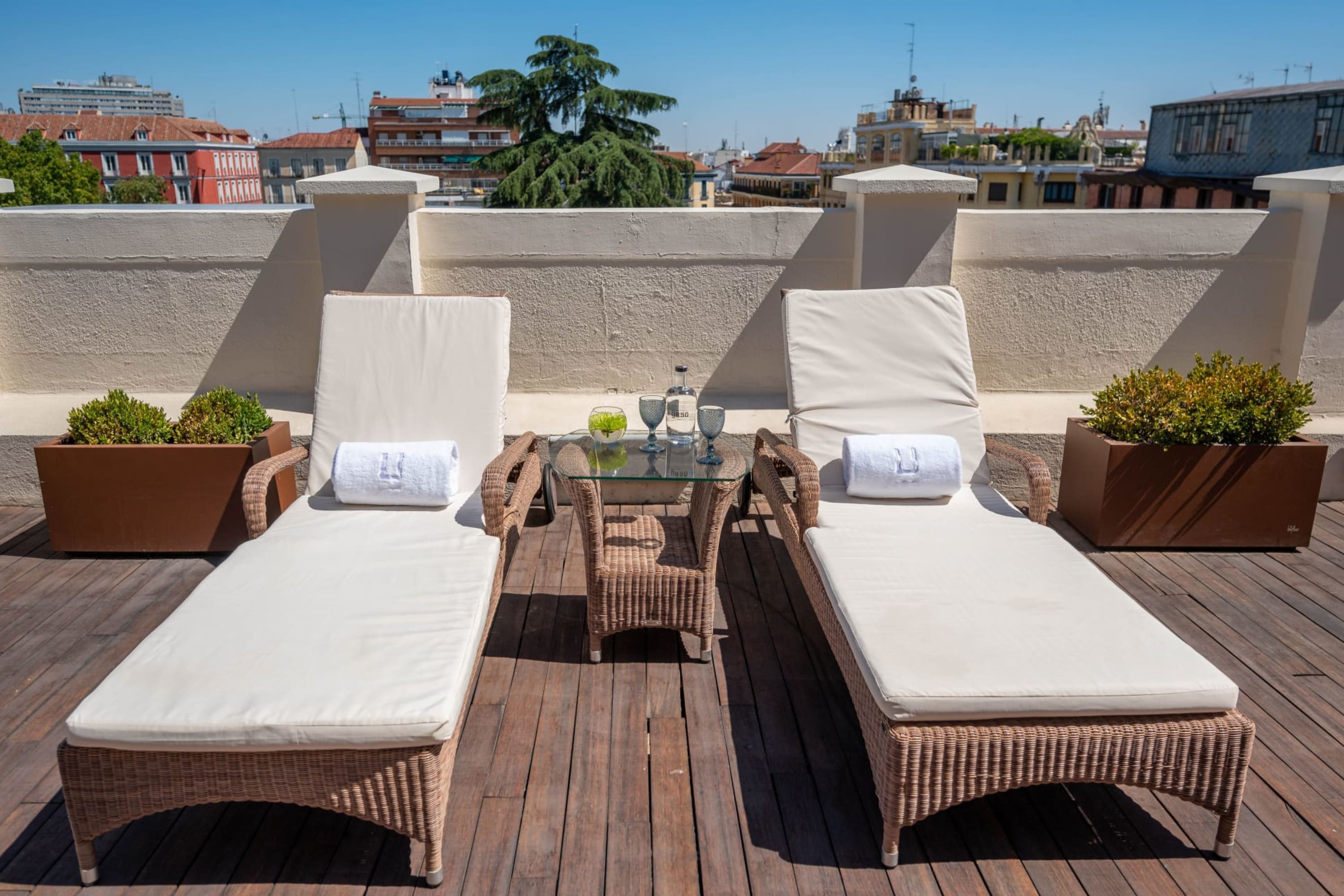
Image courtesy of URSO Hotel & Spa
URSO Hotel & Spa: One of Fora Advisors favorite boutique hotels in Madrid, URSO Hotel is a stylish property that blends Neoclassical origins — many of the original pieces of its construction remain, like original stained-glass windows — and contemporary trends. Enjoy the spa for a leisurely siesta from exploring the city.
Fora Reserve perks include a $100 hotel credit, a traditional Spanish tapa and glass of wine, daily breakfast, an upgrade and extended check-in/out whenever possible.
Rosewood Villa Magna: Rosewood’s gem is where to stay in Madrid if you’re part of the see-and-be-seen crowd. This art-filled hotel is an oasis for discerning socialites in the city’s stylish Salamanca neighborhood. It’s close enough to enjoy the city’s highlights, but far enough to preserve an air of exclusivity.
Fora’s Rosewood Elite partner perks at Rosewood Villa Magna include welcome amenities, daily breakfast and an upgrade whenever possible.
Toledo
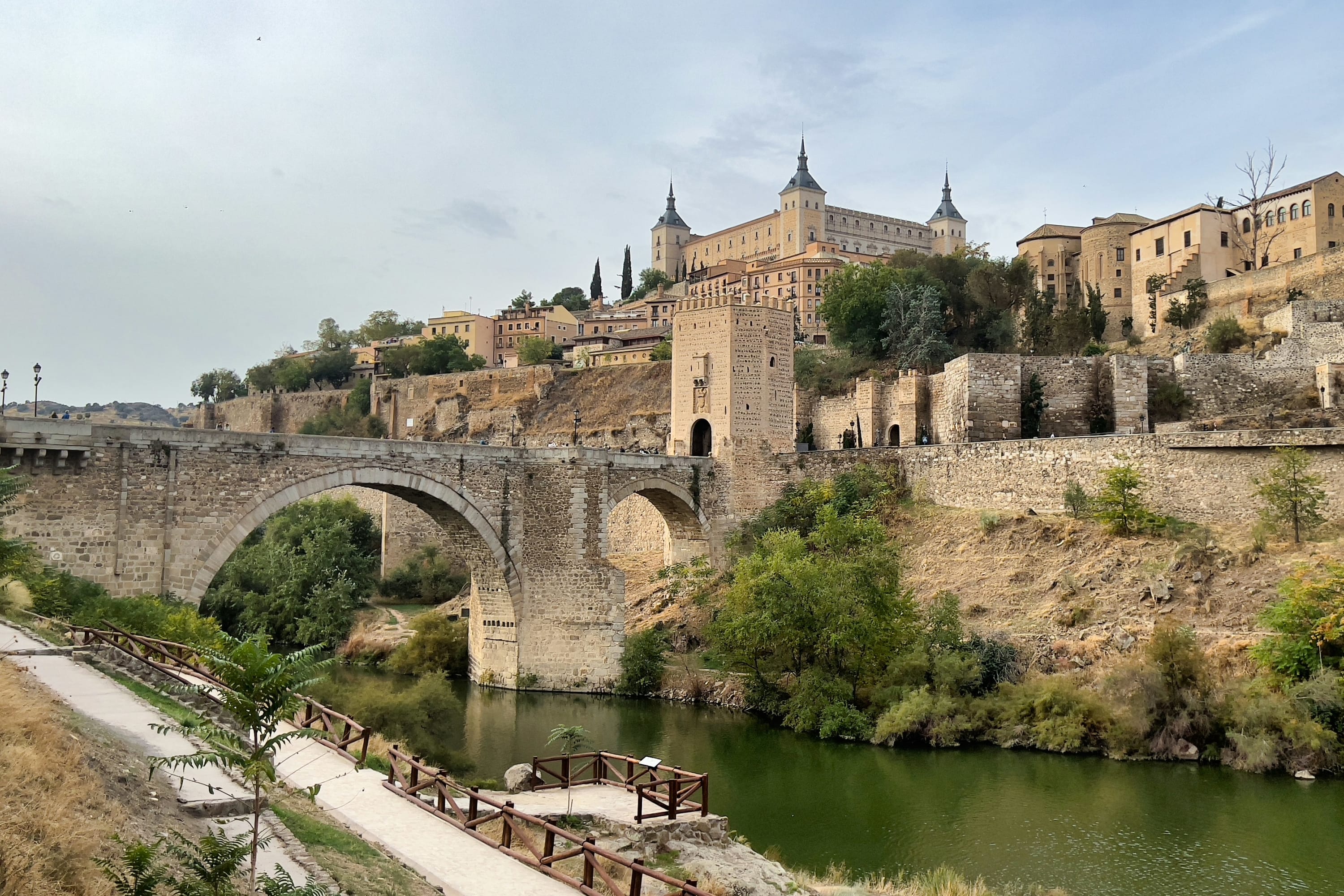
Toledo is one of the most unique places to visit in Spain. A medieval fortress stands at the top of a hill surrounded by historic streets. Toledo is best known as the “City of Three Cultures” because Christians, Jews and Muslims have coexisted here for hundreds of years. This dynamic has manifested in the city’s unique architecture, which also bears elements of both the Roman Empire and the Visigoth Kingdom.
“Toledo is a city that exudes history at every turn,” Wieteke said. “Get lost in its ancient streets with a knowledgeable guide, savor the authentic flavors of local cuisine and indulge in the city's prize-winning cheesecake.”
The exact origin of Toledo has been lost to history. The earliest mention of the city comes from Roman texts dating back to the third century BCE, but their context suggests that the site had already been settled for some time, only adding to the city’s mystique. It’s also known for its sword crafting. The tradition dates back over a thousand years and is still practiced today. You’ll find sword shops and blacksmiths throughout the city, along with trendy shops, bars and restaurants.
“Toledo is an amazing destination for families and history buffs,” Fora Advisor Becca Santos said. “This medieval town has been carefully preserved and offers insight to the Arab, Jewish and Christian influences across Spanish history.”
There are great places to stay in Toledo, but you can also visit the city from Madrid as a day trip (or vice versa). The two destinations are less than an hour apart by train or car.
Places to stay in Toledo, Spain
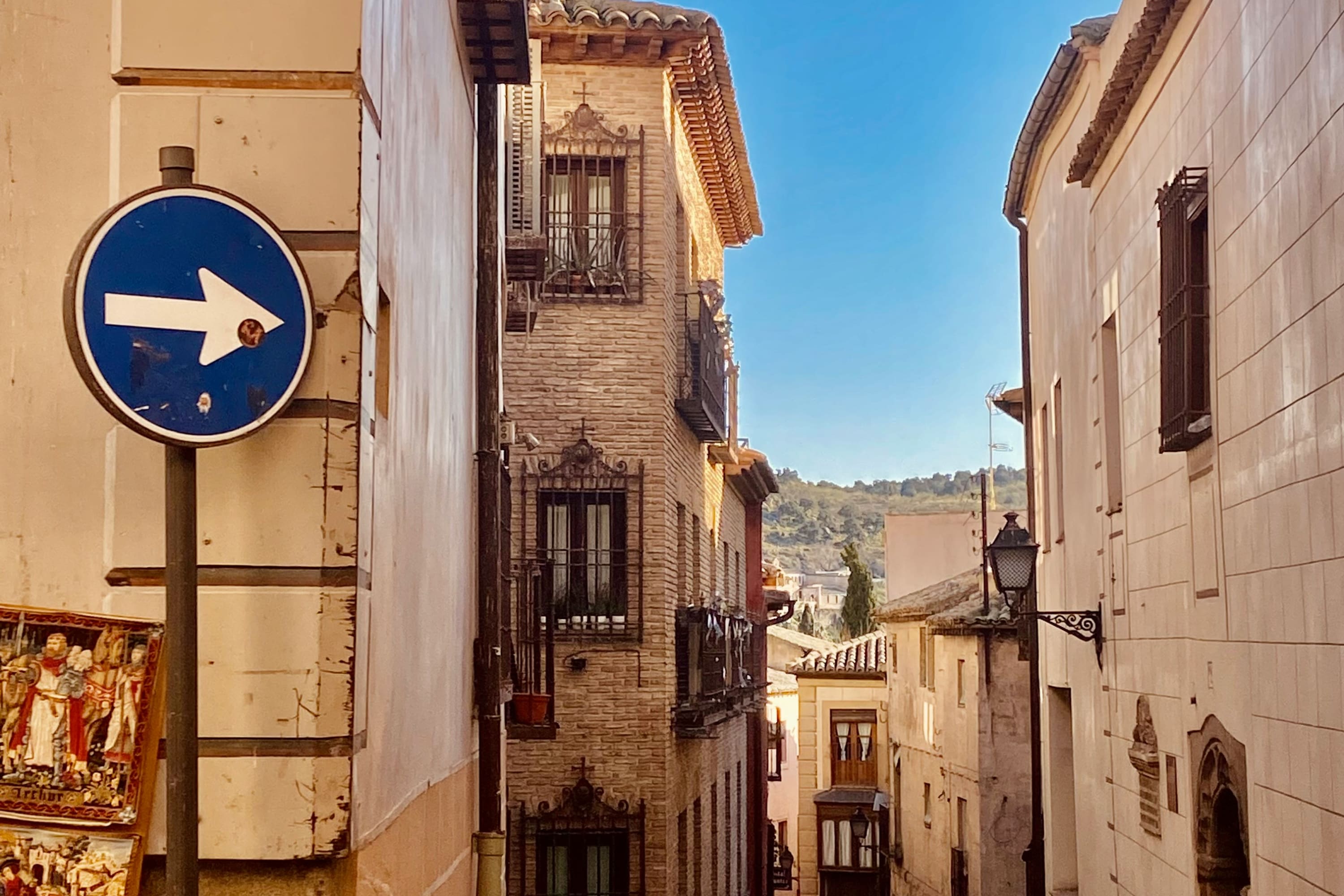
Valdepalacios Hotel Gourmand: This 1500-acre countryside estate has a bohemian-meets-classical-luxury vibe amid green scenery and calm waterways. Expect cozy but luxurious rooms, stellar dining and a selection of activities ranging from offroad tours to visits to the hotel’s spa.
Fora Perks include a €25 hotel credit, a welcome amenity, an upgrade and extended check-out whenever possible.
Andalusia
Andalusia tops many Spain bucket lists. This Mediterranean region is defined by vibrant inland cities like Seville and Granada giving way to stunning seaside destinations such as Málaga and Cádiz. Even in architecturally rich Spain, Andalusia’s cities stand out for their unique blend of Moorish and Neoclassical styles. This, paired with gorgeous landscapes and coastlines — especially along Costa del Sol — and a distinct take on Spanish cuisine and tapas culture make Andalusia one of the best European trips for families, couples and solo travelers.
Seville
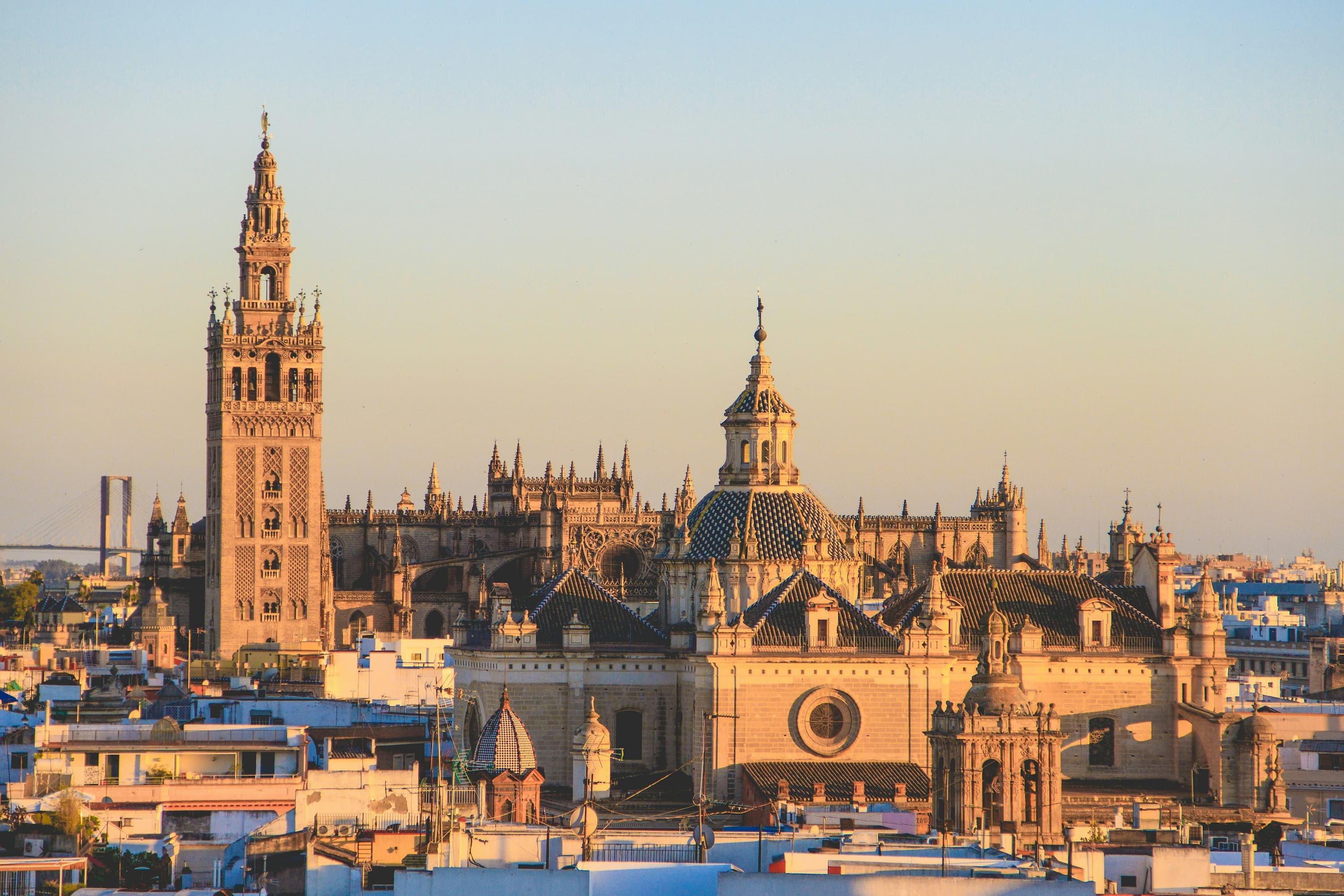
Seville’s labyrinth of narrow alleys and bustling plazas reveals an array of architectural structures from Gothic spires to ancient fortresses.
“Seville is stunning!” Fora Advisor Lisa Garrett said. “Prepare to be mesmerized by the architecture of Seville's must-see attractions, from the colorful tiles decorating the Plaza de España to the intricate Moorish details of the Real Alcázar.”
The city is also widely considered the birthplace of flamenco and tapas. Authentic flamenco venues can be found throughout the historical center of Seville (the smaller venues outside of Centro are the best). You’ll find pubs, eateries and tapas bars throughout Seville’s neighborhoods.
“Seville captures the soul of classic Spain — the place where tapas are never ending, bullfighting remains an art form and the siesta isn't just a stereotype but an honored tradition,” Fora Advisor Theresa Baumann said.
Seville is also well connected to the rest of Andalusia and the country at large. It’s a convenient base if you’re touring all the best places to go in Spain.
Places to stay in Seville, Spain
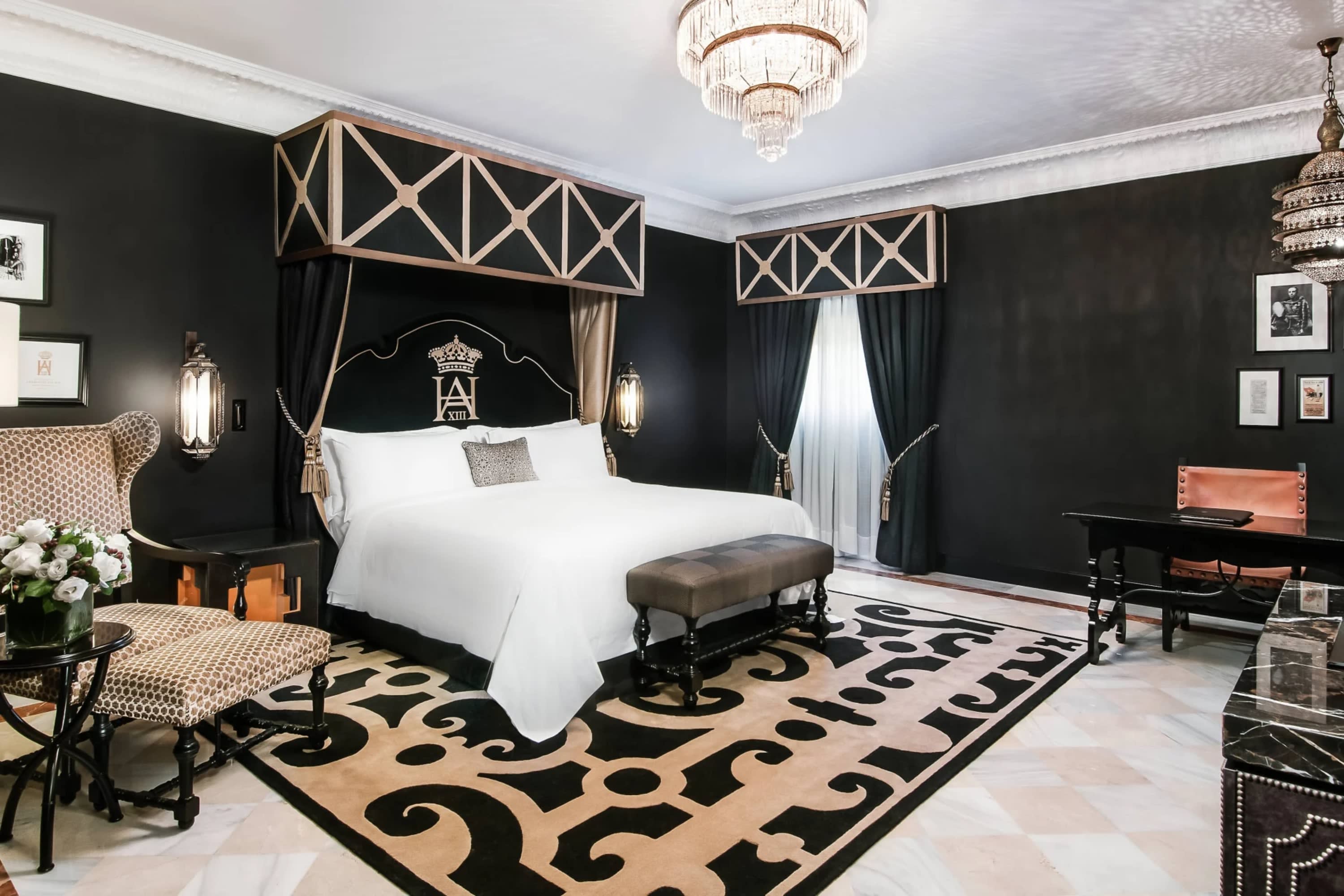
Image courtesy of Hotel Alfonso XIII, A Luxury Collection Hotel, Seville
Hotel Alfonso XIII, A Luxury Collection Hotel, Seville: Hotel Alfonso XIII was built at the same time as Plaza de España to host VIPs during the Universal Exhibition of 1929. It was meant to showcase the golden standard in Spanish hospitality, and continues to do so a century later. Enjoy a sophisticated atmosphere, elegant décor and exceptional service.
“Hotel Alfonso is a must-stay spot in Seville — there is no other option,” Theresa said. (There are other options, Theresa just — understandably — loves the hotel.)
Fora’s Marriott STARS partner perks include a $100 hotel credit, a welcome amenity, daily breakfast, an upgrade and extended check-in/out whenever possible.
Mercer Hotel Sevilla: This is where to stay in Seville if you prefer a boutique vibe. Mercer Hotel’s classical yet avant-garde design makes for a luxurious and homey stay. Its location near the border of El Arenal, Santa Cruz and El Centro puts you next to most of the city’s top landmarks.
Fora Perks at Mercer Hotel Sevilla include welcome amenities, an upgrade and extended check-out whenever possible.
Granada
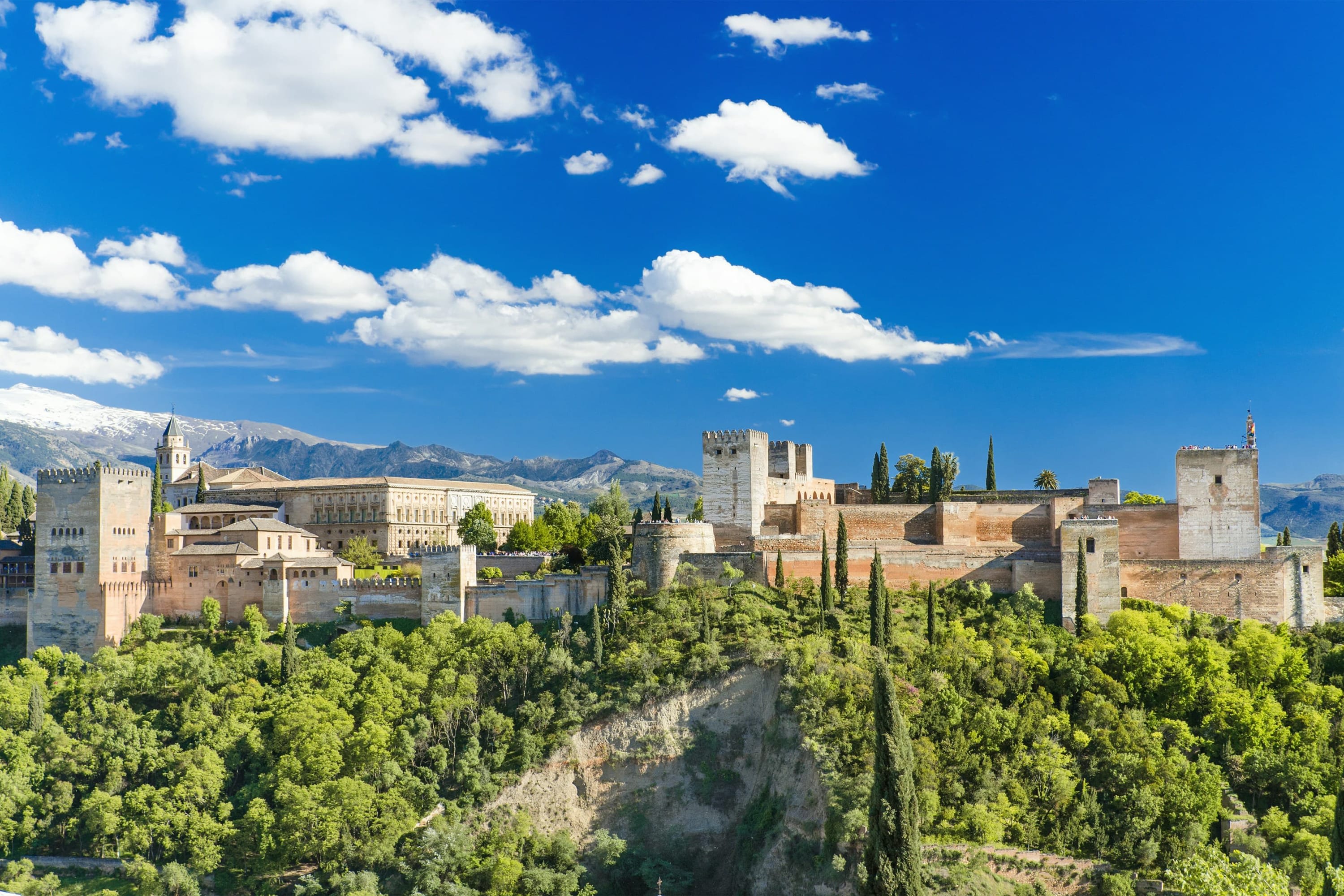
Granada is a testament to Moorish artistry. The winding alleys of the Albaicín district are filled with history, while tapas bars and local cafés add a contemporary vibrancy infused with authentic Andalusian flavors.
“Granada offers so much for families, from flamenco shows in cave restaurants to Moorish markets,” Fora Advisor Traci Lee said.
No other landmark in Granada garners as much attention as the Alhambra, however. It’s a massive, imposing medieval fortress. Intricate detailwork in its walls, turrets and towers persists almost 800 years after its construction. Inside, you’ll find gardens, colorful tilework and a tranquil atmosphere befitting the space’s original purpose as a calming retreat for the Moorish élite.
Granada is also a convenient base for exploring the Sierra Nevada mountains, where you can enjoy hiking in warm months or skiing in winter. Seville and Málaga are close enough for day trips or additional stops on an Andalusia tour.
Places to stay in Granada, Spain

Image courtesy of Seda Club Hotel
Seda Club Hotel: This hotel is in Centro, where to stay in Granada for access to the city’s liveliest streets. Modern design blends with Moorish motifs to offer a stay that acknowledges Granada’s past while feeling fresh and new. The Albaicín and Alhambra are within walking distance, as are the city’s best restaurants and shopping.
Fora’s SLH withIN partner perks at Seda Club Hotel include a $50 hotel credit, daily breakfast, an upgrade and extended check-in/out whenever possible.
La Bobadilla: Activities and luxurious accommodations reign at this countryside property. La Bobadilla is 30 to 45 minutes outside Granada proper. Enjoy elegant rooms, high-end spa access, gourmet Andalusian dining and outings on horseback.
Fora Perks include complimentary spa water circuit access, a complimentary couples’ private bath in the spa, daily breakfast, an upgrade and extended check-in/out whenever possible.
Málaga
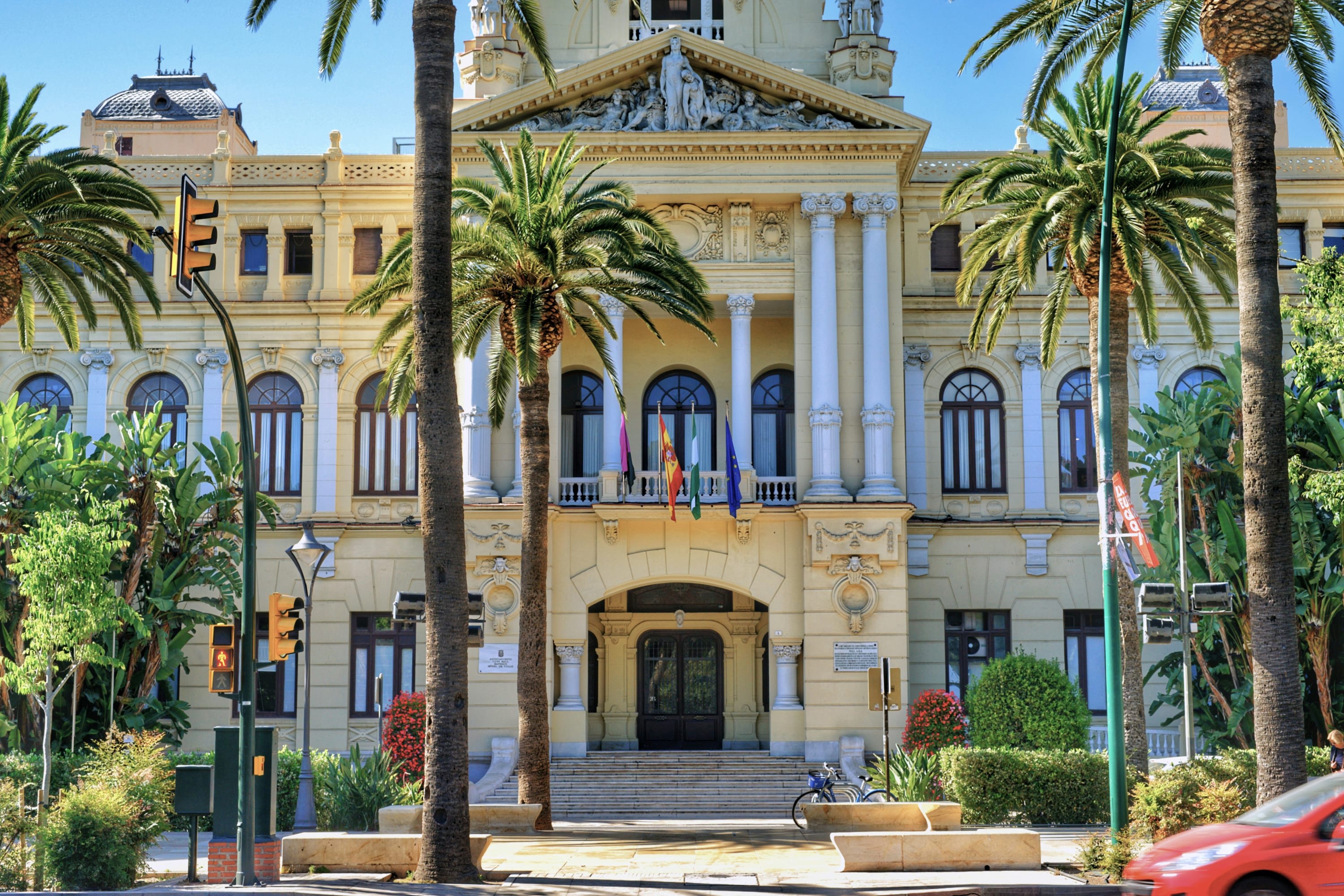
Málaga was founded by the Phoenicians over 2,800 years ago, making it one of the oldest cities in Europe — and it shows in the city’s storied streets and landmarks like the Alcazaba. The city — along with the surrounding Costa del Sol — is one of Spain’s most coveted beach destinations, especially in summer, when beaches like La Barceloneta fill up. If you’re not a fan of crowds, beaches along the greater coastline offer everything from laid-back escapes to electric parties.
The Picasso Museum (Pablo Picasso is from Málaga) and Plaza de la Merced, a go-to place for nightlife, are among the city’s urban highlights. Head to the trendy Soho neighborhood to see street murals, the CAC Málaga museum and enjoy a bite at hip cafés.
Places to stay in Málaga, Spain
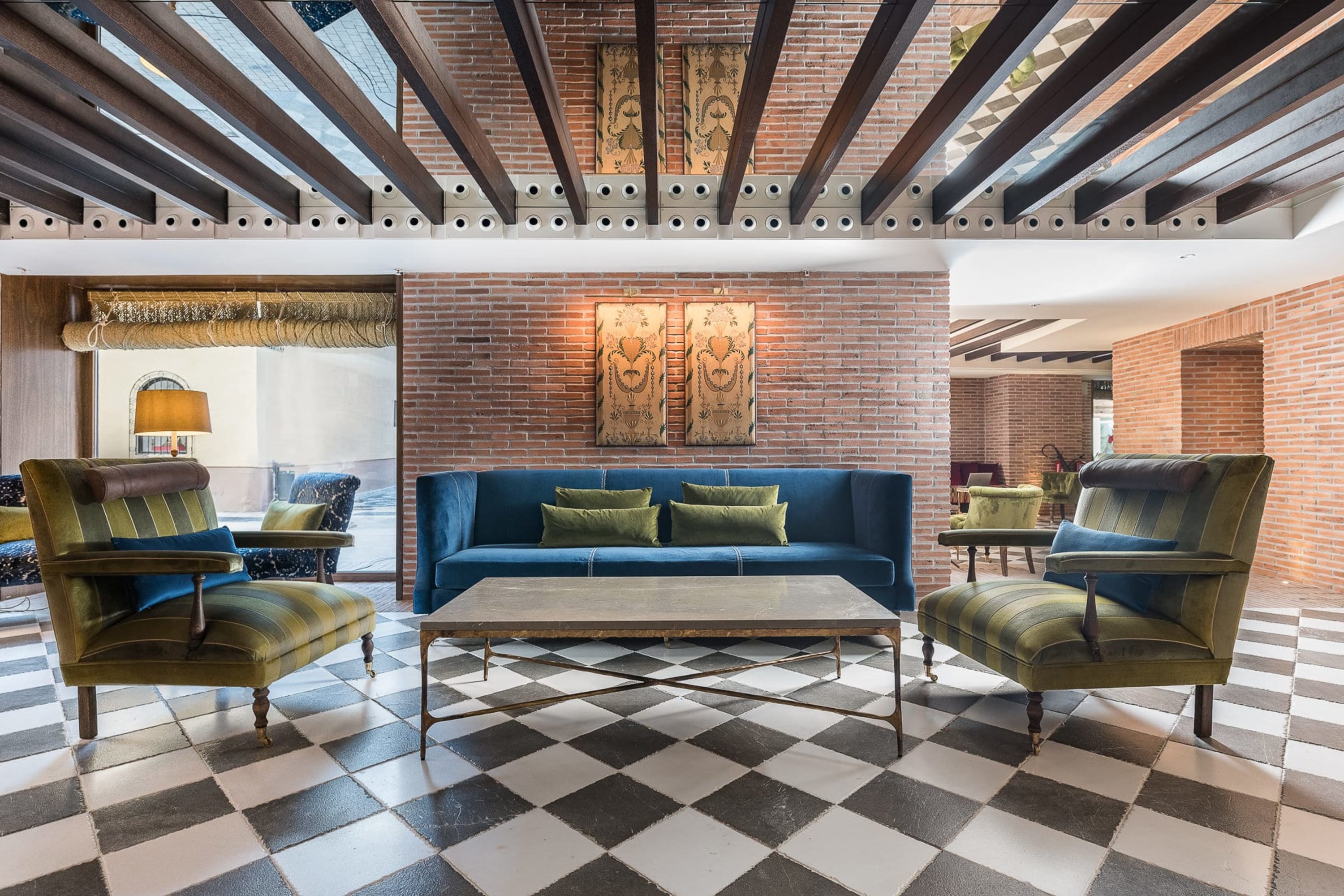
Image courtesy of Palacio Solecio
Palacio Solecio: One of the best hotels in Málaga, Palacio Solecio is in a restored 18th-century building near the city’s center. It has an intimate, boutique feel. The aesthetic melds its home’s historical roots and more modern styles.
Fora’s SLH withIN partner perks include a $50 hotel credit, daily breakfast, an upgrade and extended check-in/out whenever possible.
Gran Hotel Miramar GL: This centrally located property is an ode to classical grandeur, with elegant archways, crystal chandeliers and marble floors. Expect stellar service, sophisticated rooms and a high-end spa. The indoor pool area is lit by Moroccan lamps and star-like LEDs on the ceiling; it’s vibey and ethereal.
Fora Perks include a $100 hotel credit, daily breakfast, an upgrade and extended check-in/out whenever possible.
Day trip idea from Málaga: coastal villages and Ronda
Nearby villages like Mijas Pueblo provide a fun opportunity to explore an authentic Spanish town filled with low-key bars, cafés and historic charm. It’s only a 30-minute (and very scenic) drive from Málaga. Ronda, set atop a deep gorge in the Andalusian mountains, also makes for an enchanting day trip from Málaga. Puente Nuevo bridge offers breathtaking views over the El Tajo gorge, and the town lets visitors explore ancient Moorish architecture, a fun downtown and Spain's oldest bullring.
Marbella (Andalusia)
Marbella is part of the greater Málaga area. It’s one of the best places to go in Spain if you want to stay at a luxe contemporary resort with youthful, buzzing nightlife nearby — normally associated with the Balearic or Canary islands — without sacrificing access to mainland cities like Seville or Madrid (both easily within reach by train). Marbella’s historic old town still has the narrow cobblestone streets and whitewashed buildings, but modern marinas, upscale resorts and chic boutiques exude a glamorous, trendy and sun-soaked vibe — perhaps with various nods to the city’s historical architecture. Golf courses, nightclubs and high-end shopping add to the allure.
Places to stay in Marbella, Spain
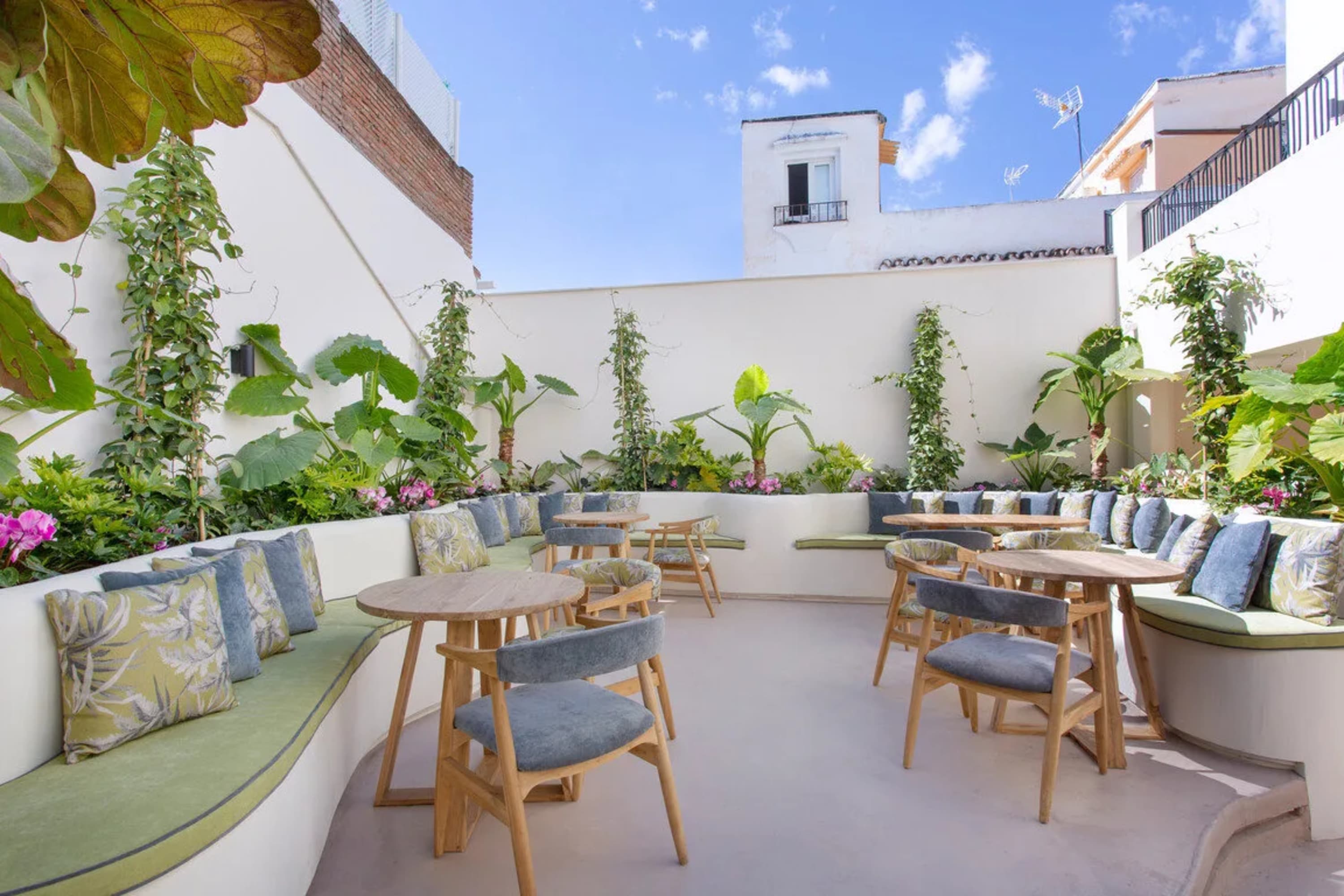
Image courtesy of La Fonda Heritage Hotel
La Fonda Heritage Hotel: Relais & Châteaux’s gorgeous property is one of the top hotels in Marbella. A posh aesthetic permeates La Fonda Heritage Hotel, which puts a contemporary spin on traditional Andalusian architecture and design. There are only 20 rooms, ensuring an exclusive and intimate stay — but the hotel is within walking distance of Marbella’s liveliest streets.
Fora Reserve perks include welcome amenities, daily breakfast, an upgrade and extended check-in/out whenever possible.
Kimpton Los Monteros: This hotel is in a quieter corner of Marbella and takes inspiration from the 1970s, when Marbella broke out as an electric European beach destination. It’s got retro-meets-Andalusian charm. A spa, two Mediterranean restaurants helmed by a Michelin-Star chef — one on a rooftop terrace — and a tennis club keep you entertained while on site. But the hotel is less than 10 minutes from Marbella’s nightlife district.
Fora’s IHG Destined partner perks include a $100 hotel credit, a welcome amenity, daily breakfast, an upgrade and extended check-in/out whenever possible.
Cádiz
Beautiful beaches, dramatic medieval towers and a popular festival season make Cádiz one of the best places to go in Spain. It was once the home of the infamous Spanish Armada, and Cádiz’s historical district still bears some elements of its past as a naval fortress. Castles, towers and high walls are found throughout. Above all else, Cádiz is renowned for the Carnival de Cádiz, a multi-week street festival with colorful costumes, performances and parades. Carnival season typically starts in late January or early February and ends the day before Ash Wednesday, which generally occurs in February or early March.
Places to stay in Cádiz, Spain:
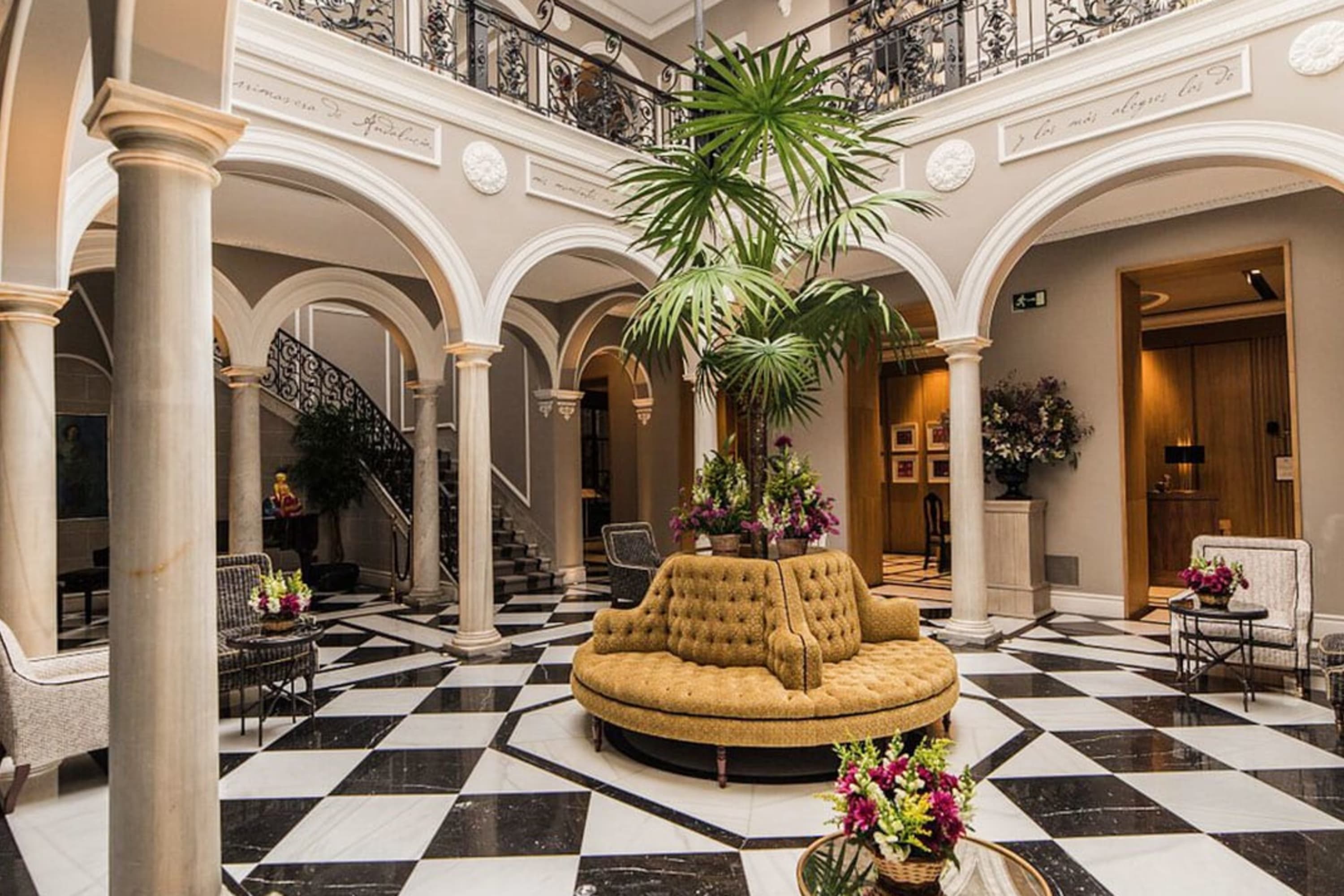
Image courtesy of Casa Palacio Maria Luisa
Casa Palacio Maria Luisa: If you’re seeking sophisticated glamor, Casa Palacio Maria Luisa is it. A historical façade welcomes you to an endlessly stylish interior marked by bold uses of color, artful décor and cozy, luxurious rooms.
Day trip idea from Cádiz: Jerez de la Frontera
Jerez de la Frontera — better known as Jerez — is a historic city only 30 minutes from Cádiz, though it lacks the name recognition of bigger Andalusian cities. If you want to include an extra stop with a trip to Cádiz, Jerez is a more accessible, laid-back alternative to Seville or Granada.
“I love Cadiz's lively streets, rich history, beach and seafood,” Traci said. “But just inland, Jerez takes it up a notch with original flamenco in cozy taverns, tastings at the most famous sherry bodegas and the famous Andalusian horses.”
Córdoba
Many cities across Spain feature an enthralling blend of architecture, but Córdoba stands out. The city’s most famous landmark, the Mosque-Cathedral of Córdoba, was built in the 700s by the Moors. It was then converted into a Catholic cathedral, after the city was taken by King Ferdinand III of Castile in the 13th century. Today, the Mosque-Cathedral remains one of the most stunning examples of Islamic and Christian architecture. There’s also the Roman Bridge, the Alcázar de los Reyes Cristianos and the ruins of Medina Azahara, just to name a few more architectural wonders in Córdoba.
Córdoba is fairly quiet compared to more popular cities like Madrid or Seville. It doesn’t receive the same kind of international attention, even in summer, so it’s a good place to visit if you prefer sparser crowds.
Places to stay in Córdoba, Spain
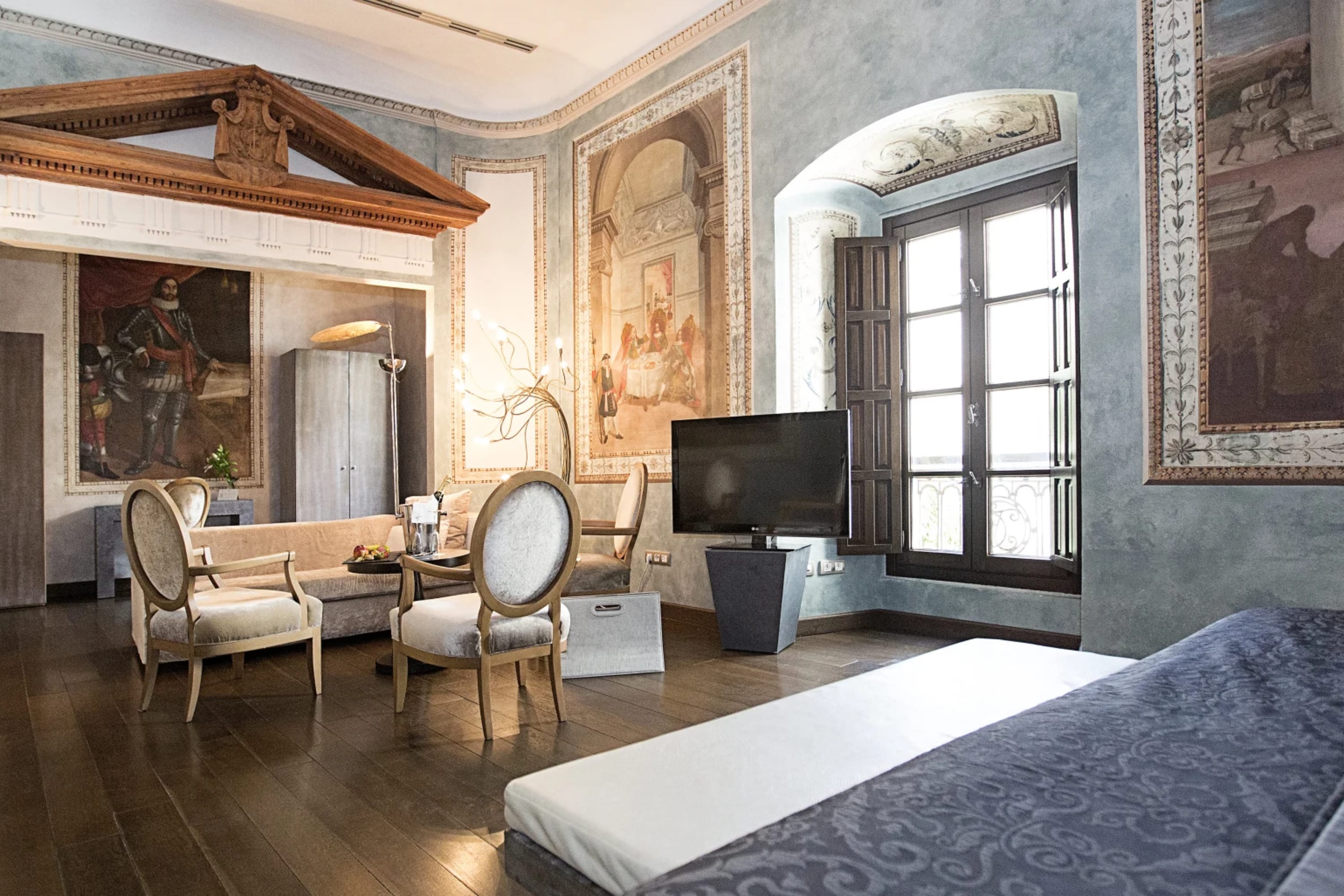
Image courtesy of Córdoba
Hospes Palacio del Bailío: The Palacio del Bailío is a luxe, boutique base in the heart of Córdoba. The spa, styled like a Roman bathhouse, is a highlight. Expansive rooms are design-forward and homey.
Fora Perks include a complimentary visit to the Roman remains of the Roman House, complimentary Tapas tasting menu including drinks, daily breakfast, an upgrade and extended check-in/out whenever possible.
Valencia
Valencia is the capital of its namesake region, halfway up Spain’s Mediterranean coast (south of Barcelona, east of Madrid). This dynamic destination is where modern innovation meets centuries-old traditions and architecture. The futuristic City of Arts and Sciences — one of the places to go in Spain if you’re visiting with kids — stands in striking contrast to the winding streets of Valencia’s historic center. The city’s vibrant culinary scene — from traditional markets to charming tapas bars — pairs well with sunny beaches and parks. Festivals add another layer to Valencia’s personality. For example, Las Fallas, held every March, transforms the city into an outdoor gallery where intricate sculptures, elaborate costumes and fireworks fuse art with tradition.
Places to stay in Valencia, Spain
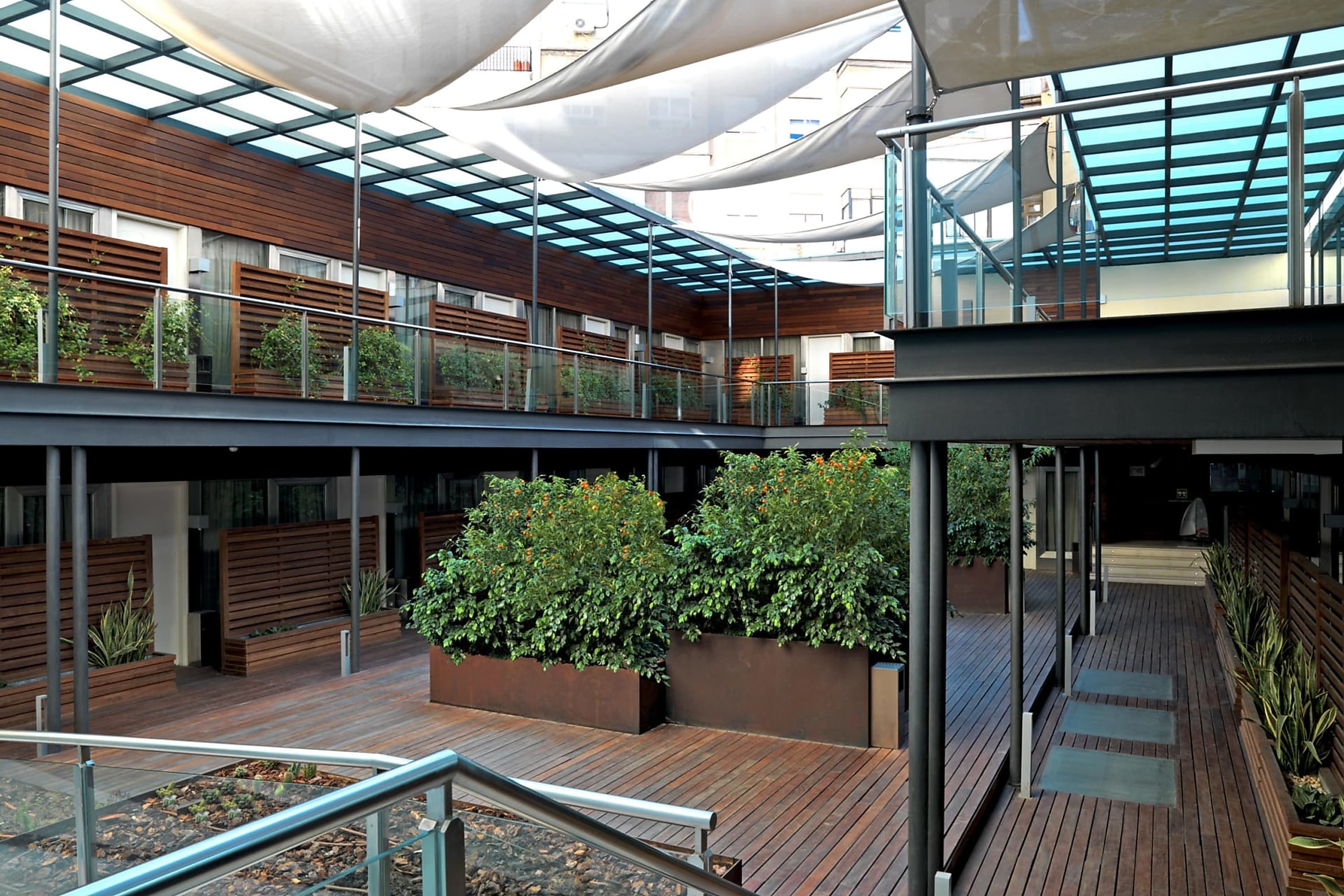
Image courtesy of Hospes Palau del Mar
Only YOU Hotel Valencia: Consider Only YOU Hotel if location is a priority; it’s between two of the city’s top neighborhoods, Cuitat Vella and Eixample, both among the best places to stay in Valencia. This inviting boutique hotel has been meticulously designed for both comfort and visual allure — elegant parquet floors, intricate lighting and fabrics with unexpected pops of color.
Fora’s Preferred Platinum partner perks include a $100 hotel credit, a welcome amenity, daily breakfast, a room upgrade and extended check-in/out whenever possible.
Hospes Palau del Mar: Palau de la Mar is a refined boutique hotel in a restored historic building. Enjoy elegant rooms along with top-tier amenities, like a luxury spa and a gourmet Valencian restaurant. The design captures the spirit of Eixample, where it’s based: fresh and modern, while paying homage to its heritage with touches like the Modernista stained-glass details in the atrium and grand columns at the lobby entrance.
Fora’s Design Hotels partner perks include welcome amenities, daily breakfast, an upgrade and extended check-in/out whenever possible.
Balearic Islands
The Balearic Islands are as ideal for a bachelor or bachelorette party as they are a family getaway. Ibiza and Mallorca are the most notable, and both are among the most coveted places to go in Spain. The island chain almost hugs Spain’s Mediterranean coast, and is accessible by boat from Valencia and Barcelona.
Ibiza
Ibiza boasts a world-renowned nightlife — but it’s also home to tranquil beaches and charming rural landscapes. Clubs, beach parties and ritzy bars welcome partygoers from around the world to the island’s shores. Beyond the party scene, you'll discover secluded coves, crystal-clear waters and traditional villages where the island's bohemian spirit thrives. This blend of energetic modernity and laid-back authenticity makes Ibiza a versatile destination, inviting you to experience both its vibrant side and peaceful natural beauty.
“Ibiza is perfect for all ages,” Marisa said. “The ‘White Isle’ is more than just legendary nightlife — find secluded calas (coves), bohemian villages and some of Spain’s best food on the Mediterranean.”
The island also hosts a handful of historical landmarks, like the Baluard de Santa Llúcia fortress that oversees Ibiza Bay.
Places to stay in Ibiza, Spain
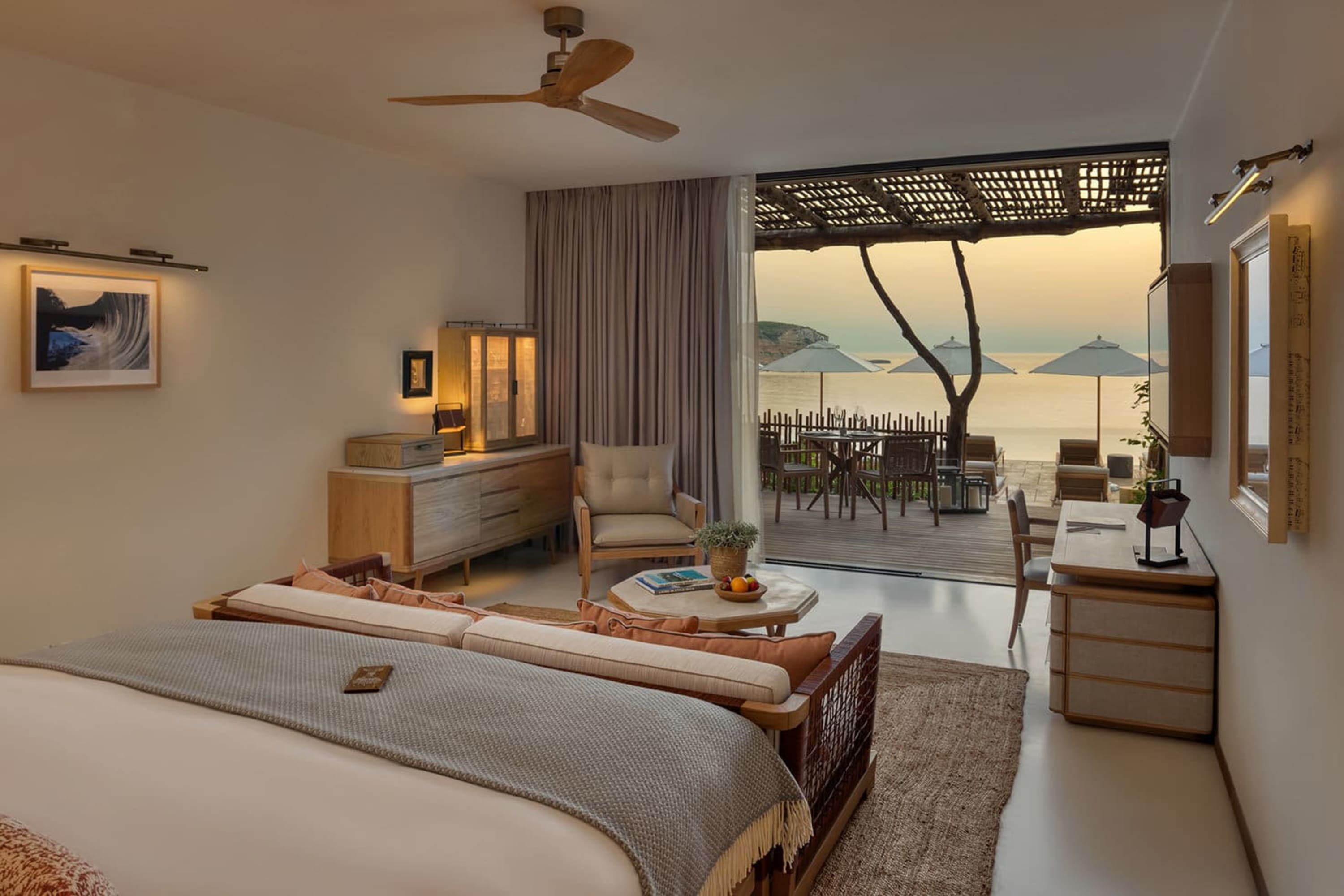
Image courtesy of Six Senses Ibiza
Six Senses Ibiza: On the island’s northern end, Six Senses Ibiza offers a quiet, luxurious and eco-conscious stay. Marisa described the property as a “barefoot-luxury haven.”
“It's a great base for exploring the quieter parts of the island,” she added, “while never being too far from Ibiza's best restaurants and clubs.”
Fora Perks include a $100 food and beverage credit, daily breakfast, an upgrade and extended check-in/out whenever possible.
The Standard Ibiza: The Standard is ideal if you want to stay in Ibiza’s urban heart. This sleek and contemporary hotel is a stylish base for enjoying the island’s nightlife.
Fora’s Standard Secret Agent partner perks include a food and beverage credit, daily breakfast, upgrade and extended check-in/out whenever possible.
Mallorca
Mallorca, the largest of the Balearic Islands, has sunny beaches, rugged mountain ranges, charming inland villages and a much calmer nightlife compared to Ibiza. It’s one of the best places to go in Spain for variety. Mallorca’s diverse landscape invites exploration — from Mediterranean coves to the dramatic Serra de Tramuntana, where ancient stone villages cling to steep cliffs, and Palma, its urban hub. Mallorca’s relatively small size puts all these attractions within reach from anywhere you stay on the island.
Places to stay in Mallorca, Spain
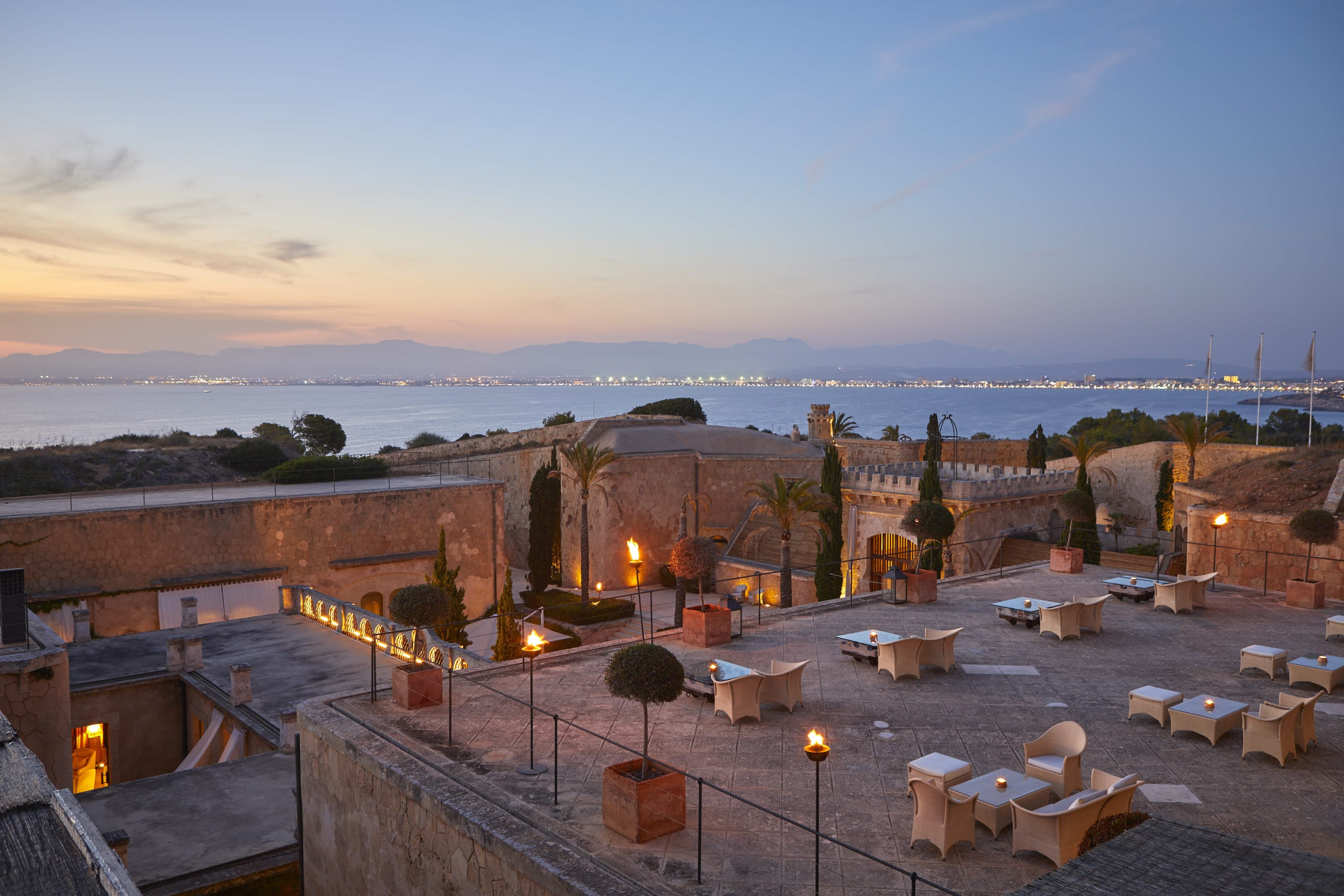
Image courtesy of Cap Rocat
Cap Rocat: Cap Rocat is a literal castle-turned-luxury-boutique hotel on a cliff overlooking the sea. The property looks like it was plucked from a medieval fairytale, but with a stylish and elegant design. Choose Cap Rocat if you want a luxe seaside resort away from crowds and tourist traps.
Fora Perks include a $100 food and beverage credit, daily breakfast, an upgrade and extended check-in/out whenever possible.
Gran Hotel Son Net: This inland hotel is more central, but still outside the busiest parts of the island. Gran Hotel Son Net was a private villa before it was converted into a hotel. It still has many of the features of its Neoclassical origins. Enjoy wine tasting, a massive but elegant pool area and authentically restored rooms with a modern spin.
Fora Perks at Gran Hotel Son Net include a complimentary 50-minute massage, daily breakfast, an upgrade and extended check-in/out whenever possible.
Basque Country
The autonomous Basque Country feels like a different world as far as places to go in Spain. From dramatic coastal cliffs and green hillsides to cities like Bilbao and San Sebastián — each renowned for its cuisine — this region invites you to immerse yourself in its distinct atmosphere. The region makes up a small portion of Spain’s northern coastline, and shares a stretch of border with France.
San Sebastián (a.k.a. Donostia)
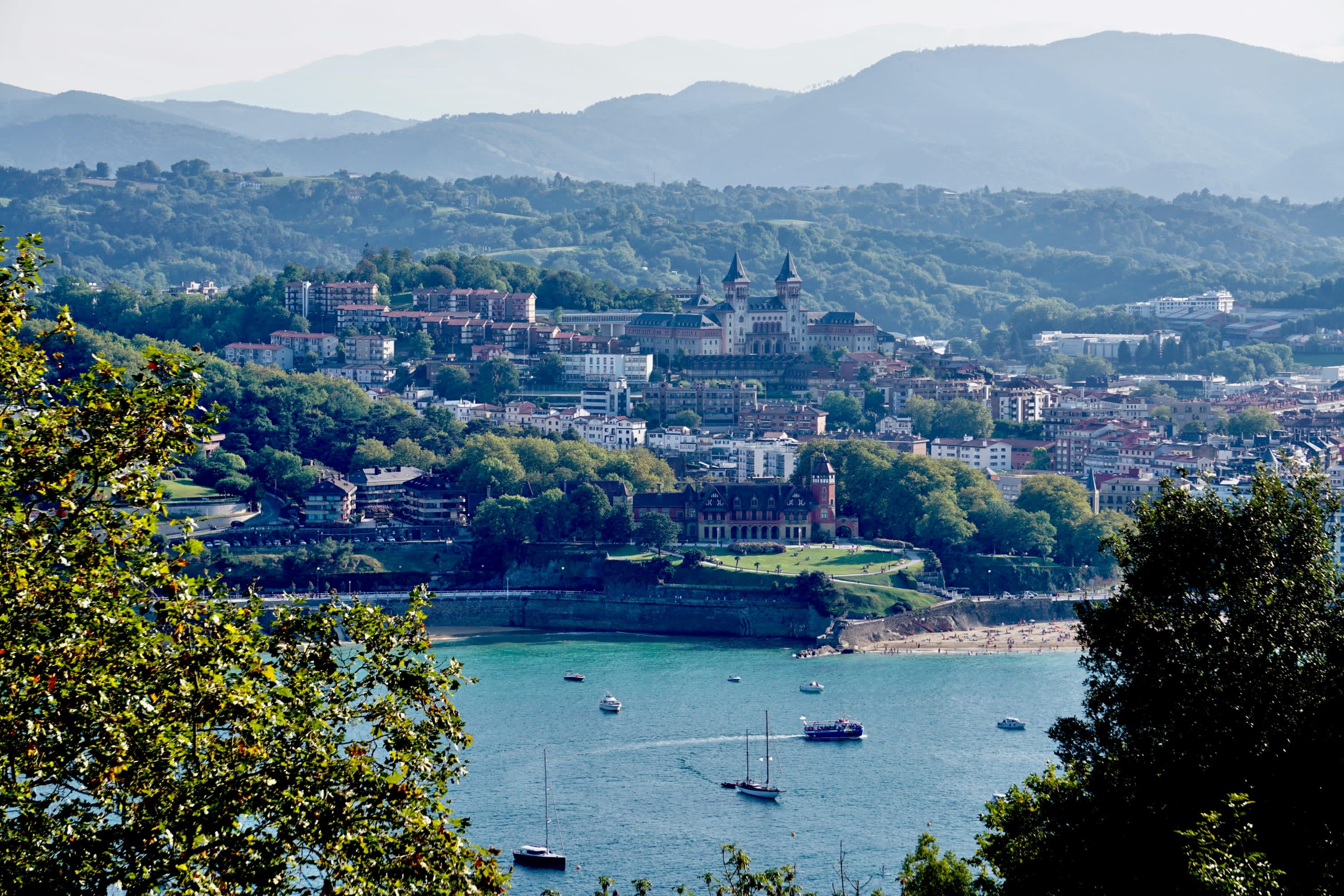
San Sebastián (Donostia, in the native Basque language) is a beautiful beachfront city on Spain’s Atlantic coast, close to the French border near the Basque mountains. The town was declared one of Europe’s Capitals of Cultures in 2016 by the European Union, and is known throughout the continent for its incredible blend of Spanish and French cuisine.
“San Sebastián is a dream for anyone who loves food — this is a special city whose culture revolves around quality ingredients, food and living life,” Fora Advisor Theresa Baumann said. “You have the beach, mountains and wine country all around. What more could you want?”
The city’s Old Town (or Parte Vieja) is one of the best places to go in Spain for wine-tasting and grandiose architecture. The area surrounding Constitution Plaza is worth checking out for its boutiques, bars and fine restaurants.
“San Sebastián is the ultimate foodie destination,” Anny said. “You won't ever leave hungry.”
There’s plenty to do in San Sebastián that doesn’t involve food. Hike among the surrounding mountains, rolling hills and coastal cliffs.
“With your kids in tow, check out the Basque cider houses for lunch, take surf lessons and try new foods on a pintxos tour,” Traci said. “Your whole family will love it!”
Whereas coastal cities like Barcelona and Málaga impress with their energy, San Sebastián is perfect for a laid-back trip. Most of Basque Country’s best hotels are found in this city, making it a great base for a tour of the region (and nearby La Rioja).
Places to stay in San Sebastián
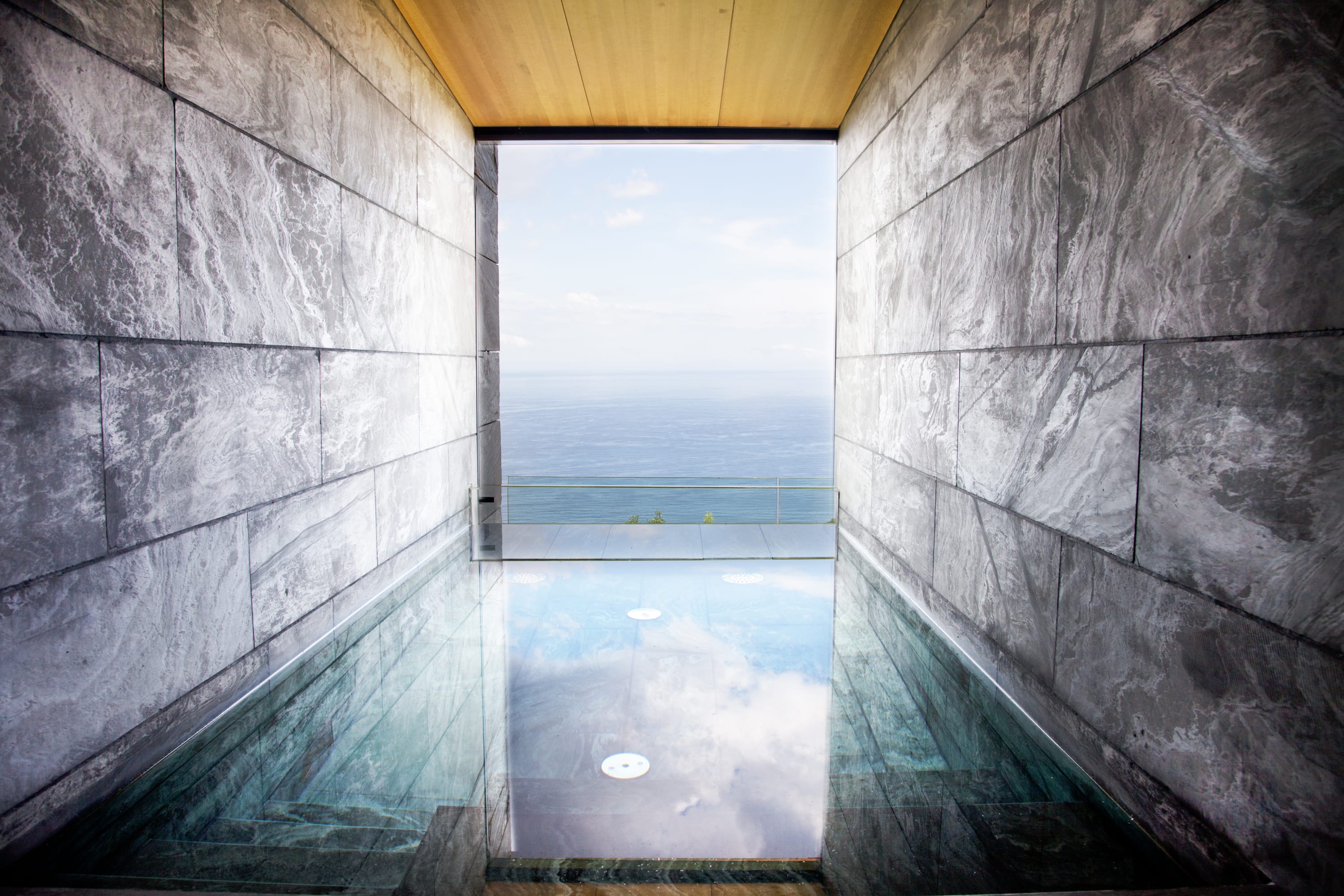
Image courtesy of Akelarre
Hotel Maria Cristina, A Luxury Collection Hotel, San Sebastian: This elegant hotel sits along a canal near the city’s waterfront, close to many of the city’s top sites. High-end vintage décor and furnishings pair with a well-preserved historic façade and interiors to build a luxe, timeless setting. The service and onsite dining are impeccable.
“Hotel Maria Cristina will tick every box and has the most amazing breakfast spread,” Theresa said. Fresh fruit, Iberian ham, Basque cheeses, smoked salmon await.
Marisa agreed, describing Hotel Maria Cristina as “the grand Belle Époque hotel of San Sebastián.”
Fora’s Marriott STARS partner perks include a $100 hotel credit, a welcome amenity, daily breakfast, an upgrade and extended check-in/out whenever possible.
Akelarre: Luxurious Hotel Akelarre is a contemporary escape just outside the city, on a cliff overlooking the ocean. It has chic, expansive rooms, a three-Michelin-Star restaurant and a massive spa built into the cliff.
“Akelarre is every gastronome's perfect refuge,” Marisa said. “After a Michelin-Star meal, retreat to your room and enjoy breathtaking views of the sea from your five-star accommodation.”
Fora’s Relais & Châteaux partner perks include daily breakfast.
Bilbao
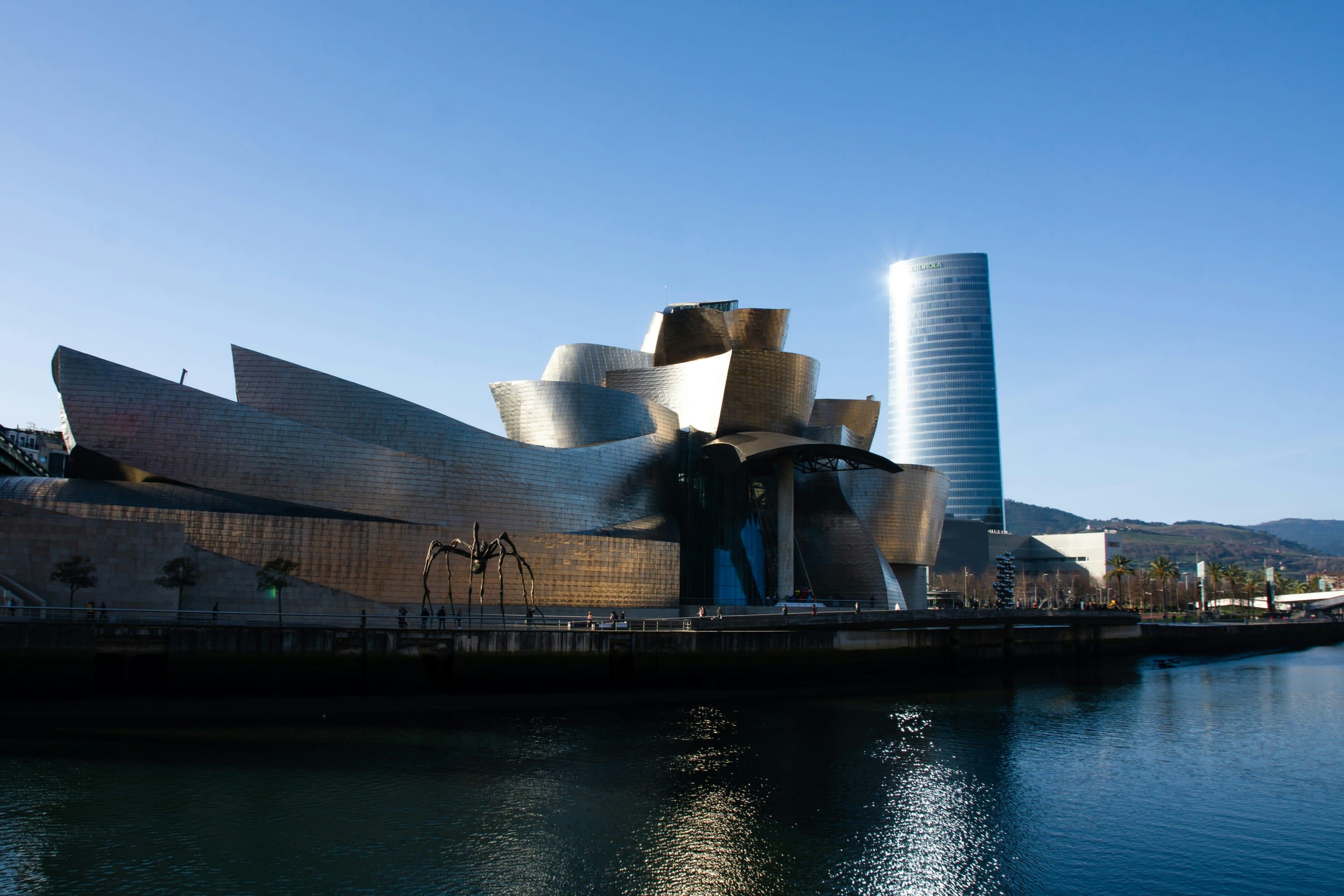
Bilbao is a bastion of contemporary Spanish architecture bisected by the Nervión River. No example is more masterful than the titanium-and-glass façade of the Guggenheim Museum of Bilbao, a celebrated 20th-century art museum and arguably Bilbao’s top attraction. Construction of the museum marked a momentous turning point in Bilbao’s history. Prior to the Guggenheim’s completion in 1997, the city was stuck in economic stagnation caused by a declining industrial sector. The museum’s opening sparked a cultural revolution in the city, transforming it into a design and arts hub, bringing a new vibrancy to its streets.
Some historical architecture exists throughout the city, but modern interpretations of 18th- and 19th-century styles are just as common. Many streets allow you to see a clear timeline of how different architecture and design styles have evolved. These streets host busy markets, a thriving gastronomy scene (especially with its famed pintxos) and a mix of boutiques and recognizable shops.
Of all the places to go in Spain, Bilbao offers some of the most approachable hotel rates. It’s a great alternative to San Sebastián in that regard, and since the two cities are only an hour apart, you can easily take day trips from one to the other.
Places to stay in Bilbao, Spain

Image courtesy of Hotel Ercilla de Bilbao
Hotel Ercilla de Bilbao, Autograph Collection: Hotel Ercilla de Bilbao has a fun, modern design inspired by the city’s embrace of the avant garde. Expect comfortable, stylish rooms along with a Basque restaurant, fitness center and great location in the city center (Abando district).
Fora’s Marriott LUMINOUS partner perks include a $100 hotel credit, a welcome amenity, daily breakfast, an upgrade and extended check-in/out whenever possible.
The Artist Grand Hotel of Art: This hotel also favors contemporary design, which is fitting given its location across the street from the Guggenheim (there’s an enclosed rooftop restaurant with floor-to-ceiling windows, offering an unbeatable view of the latter).
Fora Perks include a complimentary lunch or dinner, daily breakfast, an upgrade and extended check-in/out whenever possible.
La Rioja
La Rioja offers a different experience from Spain’s buzzing metropolitan hubs. It’s sparsely populated with small towns and smaller villages surrounded by scenic hills, valleys and rivers. Like Italy’s Tuscany, La Rioja is arguably the best place to go in Spain if you want to explore a gorgeous countryside while sampling delicious cuisine and fine local wine.
“Rioja is filled with so many amazing, locally owned vineyards,” Theresa said.
Logroño, the capital of La Rioja, is the region’s only major city, although it’s much smaller than cities like Barcelona and Madrid. Logroño is home to a ton of tapas and wine bars, plus thrifty boutiques and fine dining. The city’s central location makes it a great starting point for exploring the rest of La Rioja. The town of Haro, often considered the wine capital of La Rioja, is also a must, especially for oenophiles.
The region’s location also puts it within driving distance of Basque Country, just to the north. Barcelona is around five hours away, directly east. Madrid is three to four hours south.
Places to stay in la Rioja, Spain
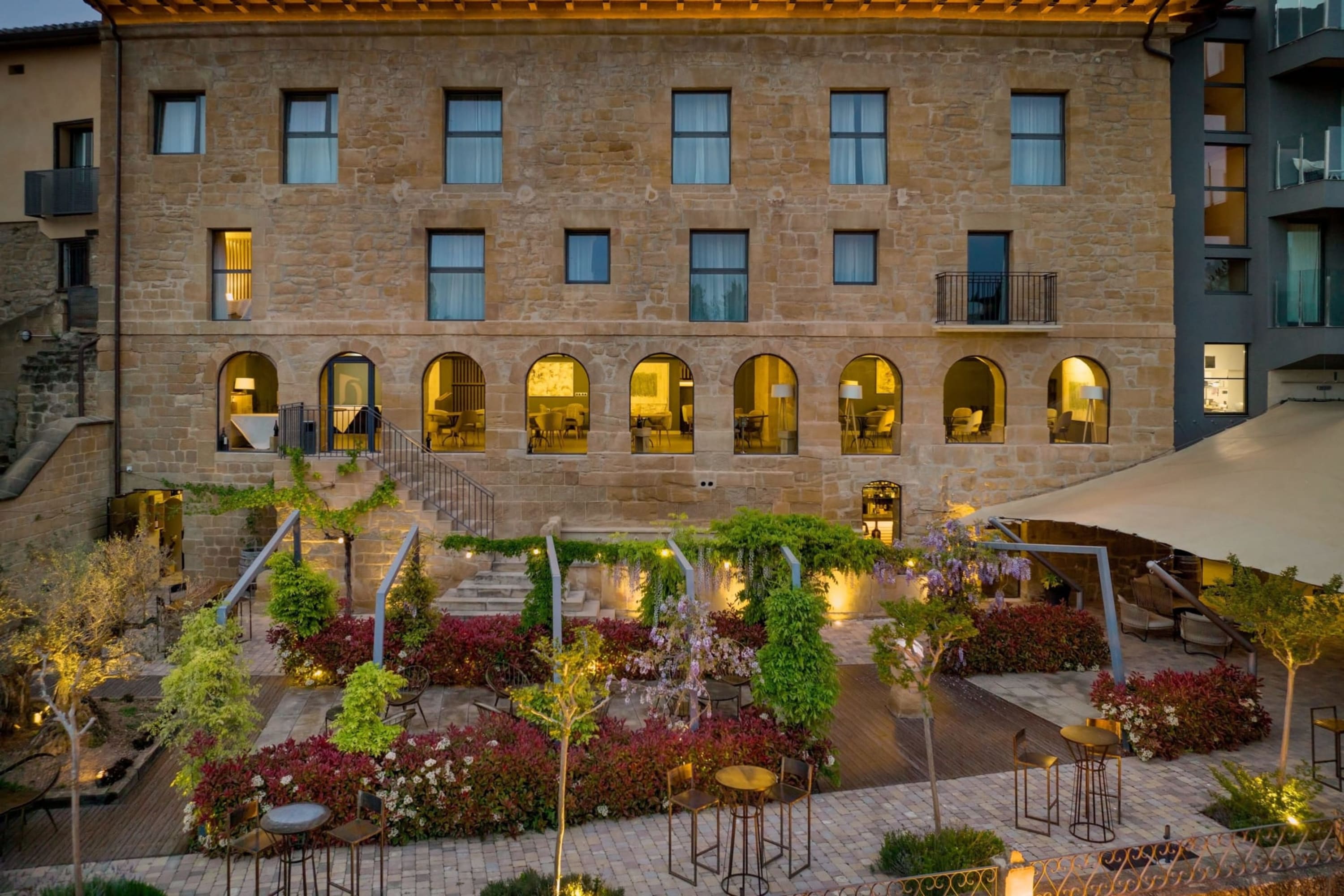
Image courtesy of Palacio Tondon, La Rioja Brinas
Palacio Tondon, La Rioja Brinas: The serene, intimate and riverside Palacio Tondon is inspired by Basque Country’s contemporary design and nods to Spain’s rich architectural heritage. It’s surrounded by vineyards and mountain trails. Inside, gorgeous spaces make heavy use of natural materials — stone, hardwood, marble — and feel like a fresh take on centuries-old styles.
Fora’s Marriott LUMINOUS partner perks include a $100 hotel credit, a welcome amenity, daily breakfast, an upgrade and extended check-in/out whenever possible.
Galicia
The autonomous region of Galicia makes up Spain’s northwestern corner. Misty, hilly and verdant landscapes are interrupted by fertile rivers, all reminiscent of the northern British Isles. Perhaps unexpectedly, the two regions share Celtic roots. (Current history backed by archeology and genealogy estimates that around 6,000 years ago, seafarers left modern-day Galicia to settle in what’s now the United Kingdom.)
A handful of cities like Santiago de Compostela — known for its eponymous pilgrimage — dot the region. Galicia’s Cape Finisterre was believed by the Romans to be the westernmost tip of the known world. In fact, the westernmost tip of Europe belongs to Cabo da Roca near Lisbon, Portugal (check out the best hotels in Lisbon).
Santiago de Compostela
Santiago de Compostela is the final stop on the legendary Camino de Santiago, a famous pilgrimage among European Catholics that in more recent times has become more of a bucket-list item for travelers of all faiths or lack thereof. The Santiago de Compostela Cathedral, a Romanesque masterpiece, is the endpoint of the journey.
The city's Old Town, enchants with its medieval streets and busy squares. Santiago de Compostela also has a rich cultural scene, with vibrant festivals, traditional Galician music and gastronomy defined by the region's famous seafood and local wines.
Places to stay in Santiago de Compostela, Spain
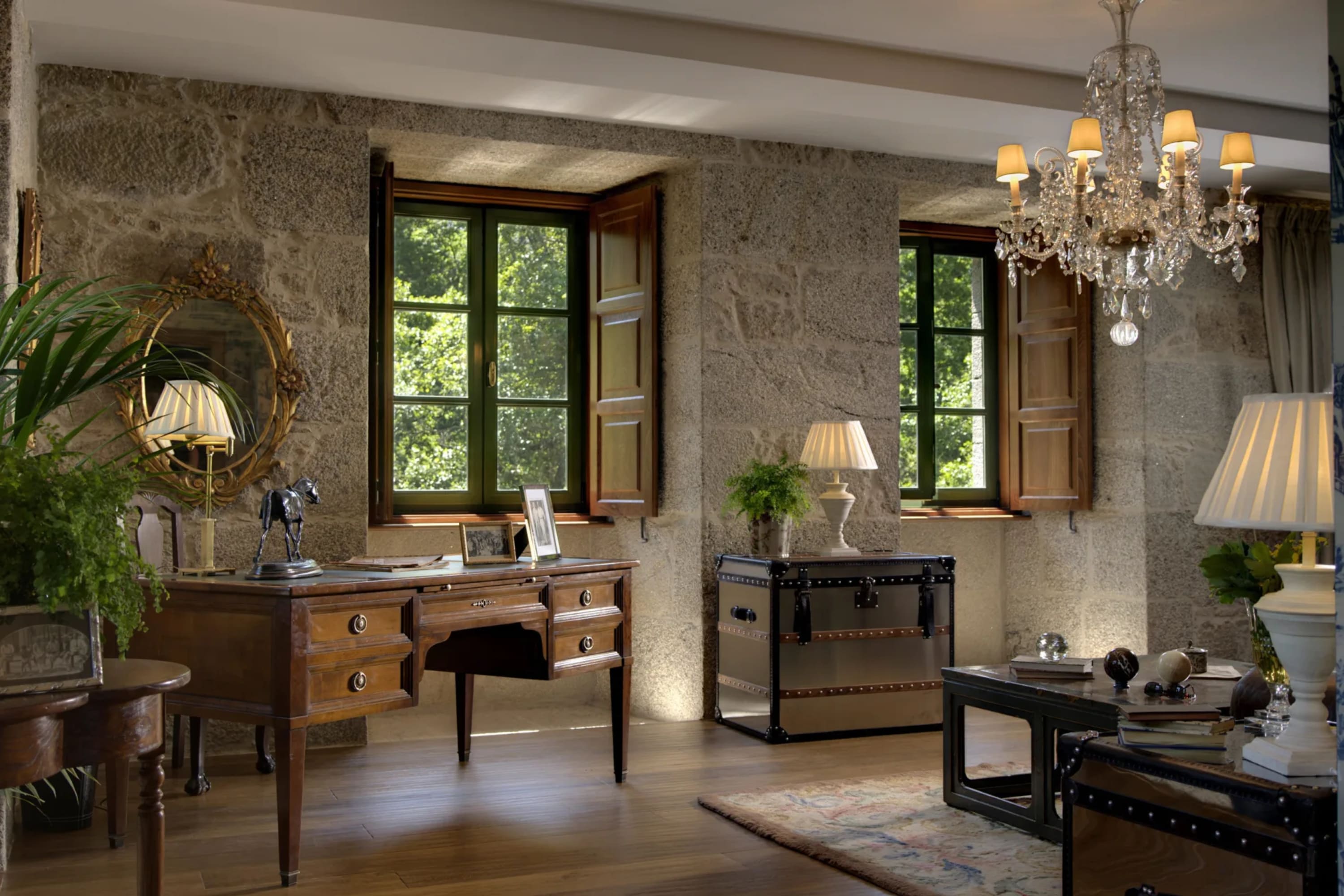
Image courtesy of A Quinta da Auga Hotel & Spa
A Quinta da Auga Hotel & Spa: This 18th-century paper mill is a semi-remote retreat just outside Santiago de Compostela. The property is serene and luxurious, with lush gardens and a full-service spa.
Fora’s Relais & Châteaux partner perks include daily breakfast.
The Canary Islands
The Canary Islands are a picturesque island chain off the coast of Africa, not Europe, yet rank among the best places to go in Spain. The islands have been part of the country since the 1400s. Initially, they were used as strategic trading ports, as well as starting points for expeditions to the Americas. But today, they’re a favorite tropical escape among Spaniards and Europeans.
“Volcanic landscapes, black-sand beaches and year-round sunshine make this an adventure-lover’s paradise,” Marisa said.
Gran Canaria is the most developed of the islands, with the archipelago’s only major urban hub, plus stunning beaches and the Maspalomas Dunes, a desert nature reserve. Tenerife, the largest of the Canary Islands by square miles, has diverse landscapes, volcanic peaks and a vibrant nightlife. It also has the Canary Islands’ best collection of resorts and hotels.
“The island has this cool mix of lively culture and rich history, which you can see in colonial towns like La Laguna,” Fora Advisor Arlette Diedericks said. “It's basically the perfect spot if you want to relax or explore — you can do both!”
The island of Lanzarote is a hidden gem home to Timanfaya National Park and laid-back beach resorts. La Palma and La Gomera are known for their forests and hiking trails. Fuerteventura features beaches and tons of options for water sports. El Hierro is an enclave known for its natural beauty and marine wildlife.
Places to stay in Tenerife, Spain
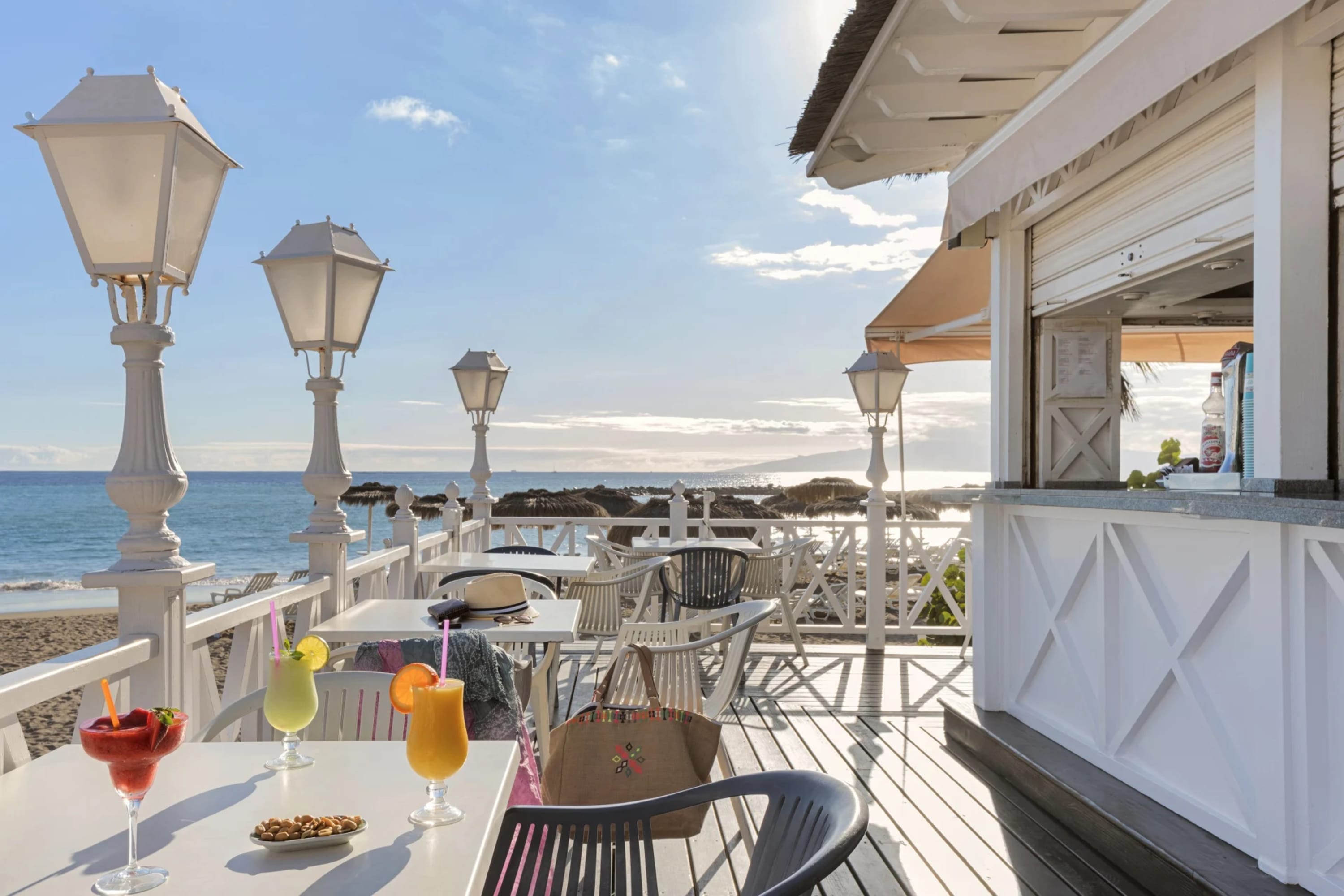
Image courtesy of Bahía del Duque
Bahía del Duque: On Tenerife, Bahía del Duque boasts 17th-century architecture, tropical gardens and a range of luxurious amenities, including multiple pools, gourmet dining options and a spa.
Fora Perks include a complimentary lunch at The Beach Club, daily breakfast, an upgrade and extended check-in/out whenever possible.
The Ritz-Carlton Tenerife, Abama: The Ritz-Carlton Tenerife, Abama, has Moorish- castle-inspired architecture, access to a championship golf course, a spa and Michelin-caliber dining like M.B. and Akira Black, which serve inventive Spanish and Japanese cuisine, respectively.
Fora’s Marriott STARS partner perks include a $100 hotel credit, a welcome amenity, daily breakfast, an upgrade and extended check-in/out whenever possible.
Fora Advisor tips and recommendations for traveling to Spain
Read on for a few more tips and insights on places to go in Spain.
Spain lives at a leisurely pace
Spain’s lax reputation is merited. Many cultural norms are built around a leisurely pace.
“Go and embrace 'sobremesa’ — it's that leisurely time after a meal, lingering over coffee or drinks, enjoying conversation,” Wieteke said. “Don't rush your experiences. Spain is about savoring the moment, whether it's a meal, a sunset or a conversation in a hidden plaza.”
Don’t try and see everything in one trip
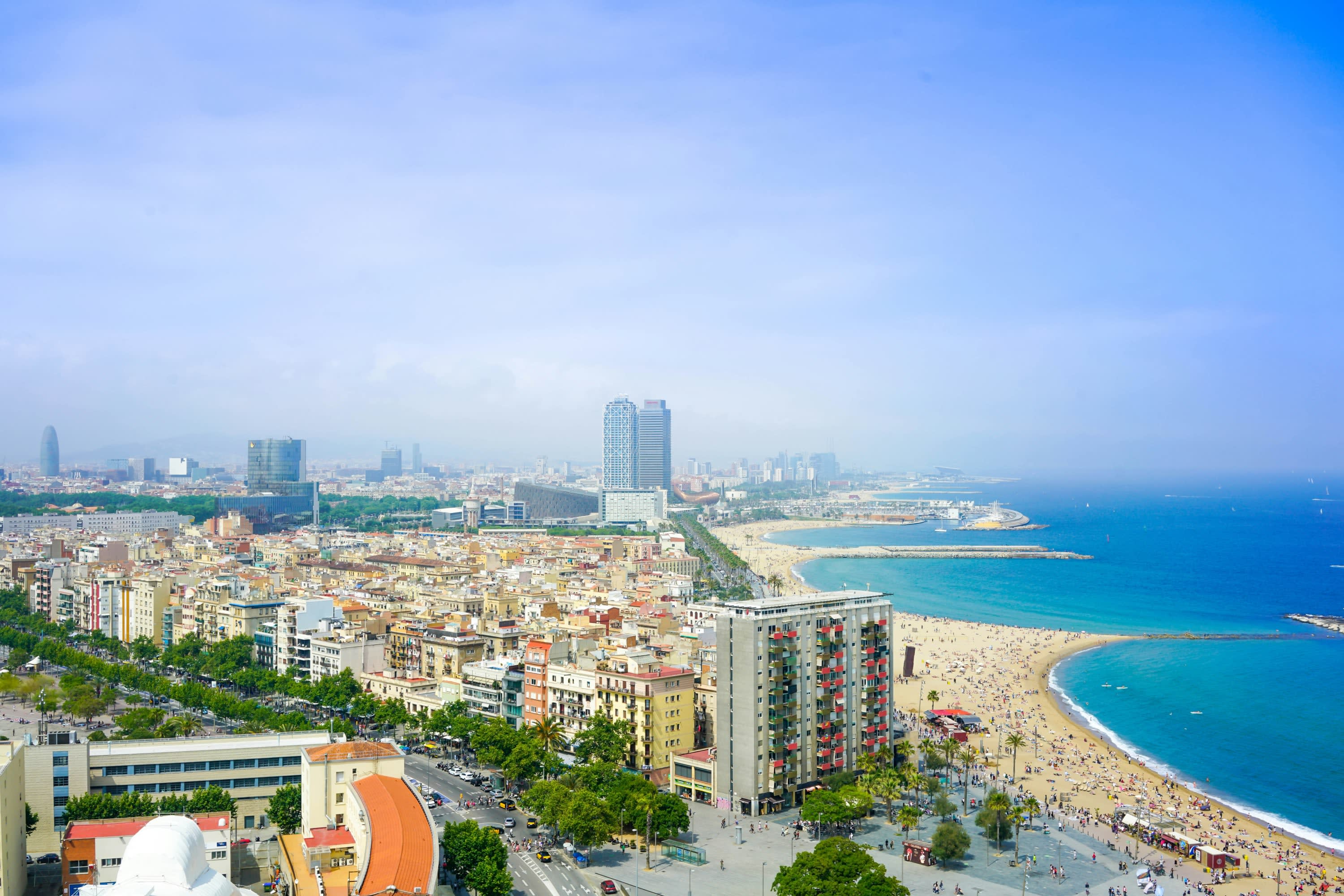
Exploring Spain in one trip is a monumental undertaking given the country's vast size and diverse regions. To experience only the highlights of Spain's best places to go, including bustling cities like Barcelona and Seville, plus scenic landscapes in regions like La Rioja, you would need at least two weeks — and you’d only get a taste. Realistically, you could spend a week or longer in each major city. Multiple visits — or a truly extensive trip — would be necessary to appreciate all Spain has to offer. Instead, pick one or a few destinations — or a single region, like Andalusia — and allot a few days in each place (always with the understanding that you won’t be able to see everything in one trip).
There are destinations beyond Spain’s best places to go
We broke down over a dozen amazing destinations across Spain — many popular, some low-profile — but there’s so much more to the country.
“Be sure to look further afield than the major cities,” Marisa advised.
Pamplona, Menorca, the Castile and Léon countryside and many more all have something to offer.
There’s no one ‘best time to visit Spain’
There’s something to see in Spain in every season.
“Whether you’re exploring art, hiking the Pyrenees, relaxing on pristine beaches or savoring incredible cuisine, there’s never a bad season to experience Spain,” Marisa said.
That said, certain times of year are better for specific activities. Spring is ideal for most regions, with pleasant weather and blooming landscapes. It’s the perfect time to explore inland cities like Seville, Granada and Madrid, as well as the countryside and coastal area.
Summer is great for visiting the beach and enjoying Spain’s vibrant nightlife, particularly along Costa del Sol, Costa Brava and the Balearic and Canary Islands. Inland cities like Madrid and Seville can be scorching hot in summer, though. (Theresa shared that if you’re visiting the south during the summer, be aware that most non-touristy places close during lunch due to the heat.)
Fall brings comfortable temperatures and fewer tourists. It’s a wonderful time to visit regions like La Rioja for the wine harvest season, and cities like Barcelona and Valencia, after their peak travel season. Winter is perfect for snow sports in the Pyrenees and Sierra Nevada mountains. Also consider visiting southern coastal areas like Andalusia during the winter, when the weather will be a lot milder, if you don’t mind missing the beach.
It’s relatively easy to get around Spain
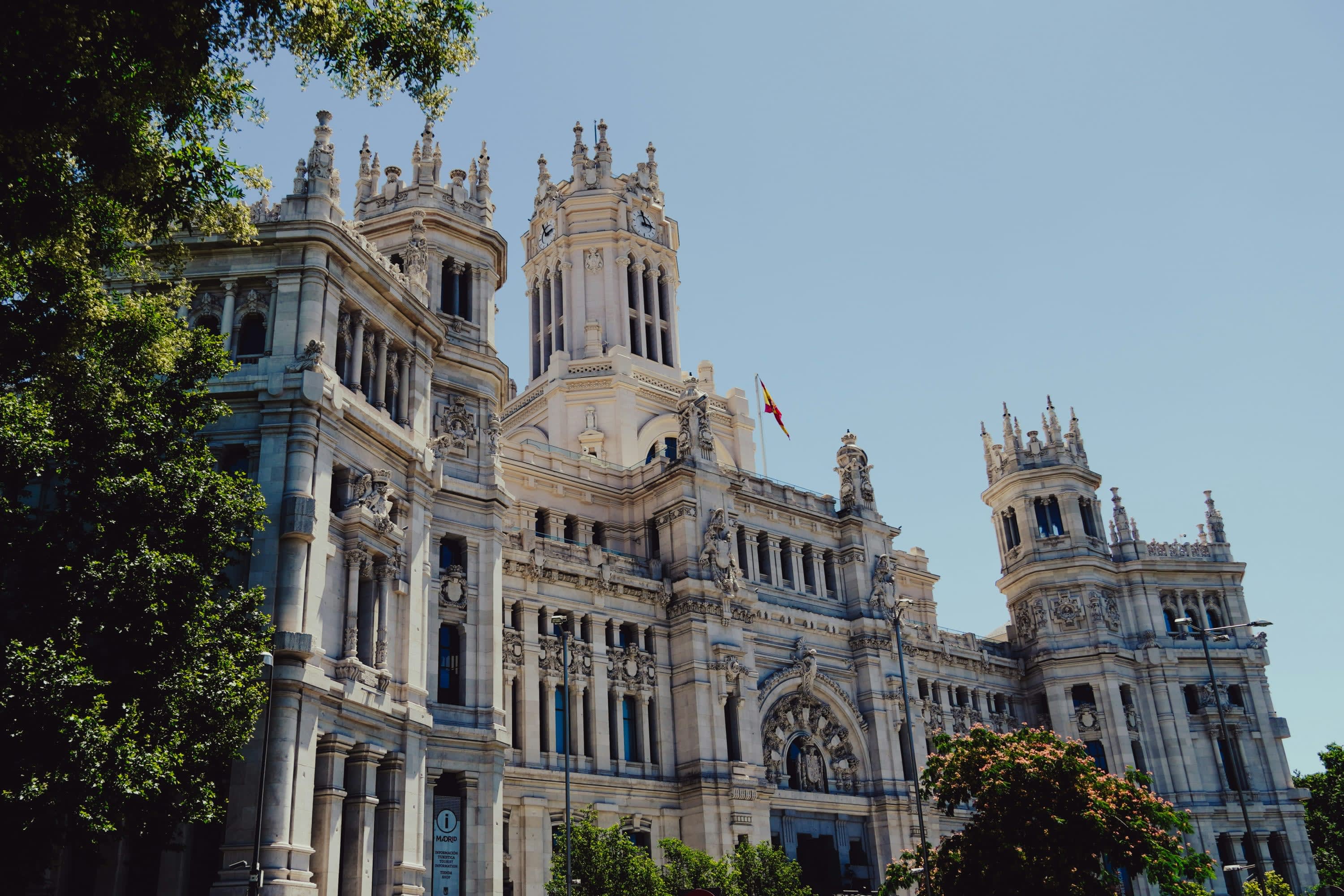
Spain is well connected by an efficient train system: “Their trains are speedy, safe and very efficient!” Fora Advisor Amanda Bates said.
However, Theresa noted that while all the major cities are connected by train, renting a car is a great way to explore.
Book Spain travel well in advance
Spain is consistently one of the most visited countries in the world. To ensure you get the right room and property, Fora Advisors recommend booking trips to Spain three to six months in advance for major destinations, especially for peak travel times (but the sooner the better). If you’re planning to visit less popular areas in the shoulder seasons or winter, you may be able to get away with a shorter booking window.
More Europe travel inspiration
Read about more destinations across Europe, from the castles of Edinburgh and Lisbon to the beaches of Greece:
